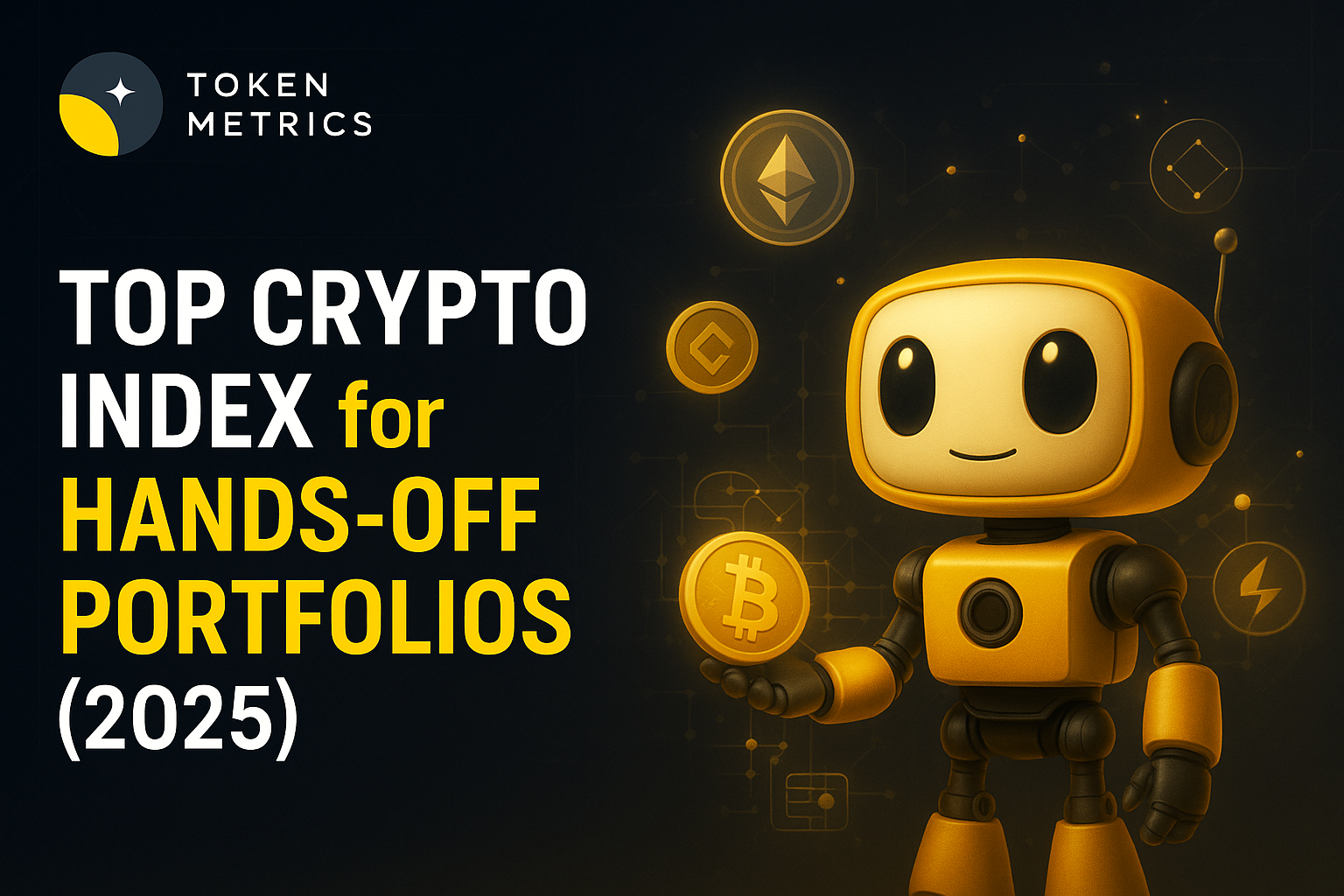Top Crypto Trading Platforms in 2025







%201.svg)
%201.svg)
Big news: We’re cranking up the heat on AI-driven crypto analytics with the launch of the Token Metrics API and our official SDK (Software Development Kit). This isn’t just an upgrade – it's a quantum leap, giving traders, hedge funds, developers, and institutions direct access to cutting-edge market intelligence, trading signals, and predictive analytics.
Crypto markets move fast, and having real-time, AI-powered insights can be the difference between catching the next big trend or getting left behind. Until now, traders and quants have been wrestling with scattered data, delayed reporting, and a lack of truly predictive analytics. Not anymore.
The Token Metrics API delivers 32+ high-performance endpoints packed with powerful AI-driven insights right into your lap, including:
Getting started with the Token Metrics API is simple:
At Token Metrics, we believe data should be decentralized, predictive, and actionable.
The Token Metrics API & SDK bring next-gen AI-powered crypto intelligence to anyone looking to trade smarter, build better, and stay ahead of the curve. With our official SDK, developers can plug these insights into their own trading bots, dashboards, and research tools – no need to reinvent the wheel.
%201.svg)
%201.svg)
If you want broad exposure to cryptocurrencies without constant chart monitoring, a top crypto index offers a streamlined way to participate in the market. Token Metrics provides innovative tools to help you understand and access such indices efficiently.
If you’re seeking an uncomplicated, rules-driven approach to crypto investing that adapts to market conditions, a top crypto index might be worth exploring. These indexes automate the process of capturing upside potential while managing risk during downturns, making crypto investing more accessible for a variety of investor profiles.
A crypto index is a systematic, rules-based collection of digital assets that reflects a specific universe—such as the top 100 cryptocurrencies by market capitalization. It relies on transparent methodologies and scheduled rebalancing to ensure that the composition remains aligned with market dynamics. These indexes aim to provide broad exposure while reducing the need for individual asset management.
Many modern crypto indexes incorporate regime switching mechanisms: during bullish periods, they hold top assets; during bear markets, they shift to stablecoins to mitigate losses. Weekly rebalancing updates the constituents based on current market rankings, and transparency tools such as strategy descriptions, gauges, and transaction logs allow users to verify holdings and changes in real-time.
To gain early exposure, follow these steps:
Consider your investment style:
It is a rules-based basket that tracks a defined universe of digital assets—such as the top 100 by market cap—using transparent methodology and scheduled rebalancing.
The index rebalances weekly, with regime switches occurring when market signals change, ensuring adaptability during different market cycles.
A proprietary market-regime signal triggers the transition, exiting token positions to stablecoins during bearish periods and re-entering when signals turn bullish.
At launch, the embedded wallet will support supported funding options based on your chain or wallet. USDC payout is available upon sale; further options may follow.
No. It’s an embedded, self-custodial smart wallet—giving you full control over your private keys and funds.
Estimated gas, platform fee, slippage, and minimum expected value are displayed before you confirm the transaction, providing full transparency.
Visit the Token Metrics Indices hub or the TM Global 100 page, tap “Join Waitlist,” and follow the instructions to register your interest and prepare for launch.
Crypto assets are highly volatile and can result in significant losses. Past performance does not guarantee future results. This content is for research and educational purposes only and not financial advice.
%201.svg)
%201.svg)
If you’ve tried to “own the market” in crypto, you’ve felt the pain: chasing listings, juggling wallets, and missing rebalances while prices move. A top 100 crypto index aims to fix that—giving you broad exposure when the market is bullish and standing down when it’s not. Token Metrics Global 100 is our rules-based version of that idea: it holds the top-100 by market cap in bull regimes, moves to stablecoins in bear regimes, and rebalances weekly. You can see every rule, every holding, and every rebalance—then buy the index in ~90 seconds with an embedded on-chain flow. → Join the waitlist to be first to trade TM Global 100.
The market keeps cycling. New leaders emerge quickly. A “set-and-forget” bag can fall behind, while manual baskets burn hours and rack up slippage. Search interest for crypto index, regime switching, and weekly rebalancing keeps growing because people want a simple, disciplined core that adapts.
A top 100 crypto index is a rules-based basket that tracks the largest 100 crypto assets by market cap, typically rebalanced on a schedule to keep weights aligned with the market. In 2025, that alone isn’t enough. You also need discipline for downtrends. Token Metrics adds a regime-switching layer to move to stablecoins during bear phases—so you can participate in upside and sit out major drawdowns with a consistent, rules-based approach.
Regime switching:
Weekly rebalancing:
Transparency:
You’ll always see what you own, how it changed, and why.
→ Join the waitlist to be first to trade TM Global 100.
A rules-based basket tracking the largest 100 assets by market cap, typically with scheduled rebalancing. Token Metrics Global 100 adds regime switching to stablecoins during bear markets.
Weekly. In addition, if the market signal flips, the entire portfolio may switch between tokens ↔ stablecoins outside the weekly cycle.
A proprietary market-regime signal. When it’s bearish, the index exits tokens to stablecoins and waits for a bullish re-entry signal.
On launch, funding options surface based on your connected wallet and supported chains. USDC payouts are supported when selling.
The embedded wallet is self-custodial—you control your funds.
Before you confirm a buy, you’ll see estimated gas, platform fee, max slippage, and minimum expected value—all up front.
Go to the TM Global 100 page or the Indices hub and click Join Waitlist. You’ll get notified at launch with simple steps to buy.
Crypto is volatile and can lose value. Past performance is not indicative of future results. This article is for research/education, not financial advice.
A top 100 crypto index is the simplest path to broad market exposure—if it’s built with discipline. Token Metrics Global 100 combines transparent rules, weekly rebalancing, and a regime switch to stablecoins, so you can focus on your strategy while the core maintains itself. Now’s the time to claim early access. → Join the waitlist to be first to trade TM Global 100.
%201.svg)
%201.svg)
After a whipsaw year, many investors are asking how to stay exposed to crypto’s upside without riding every drawdown. Rules-based crypto indexing is a simple, disciplined answer: follow a transparent set of rules rather than gut feelings. The Token Metrics Global 100 puts this into practice—own the top-100 in bullish regimes, rotate to stablecoins in bearish regimes, and rebalance weekly. On top of that, you can see what you own in real time with a Holdings Treemap, Table, and Transactions Log. Less second-guessing, more process.
→ Join the waitlist to be first to trade TM Global 100.
In a volatile cycle, emotion creeps in: chasing winners late, cutting losers early, or missing re-entry after fear. Rules-based crypto indexing applies consistent criteria—constituent selection, weighting, and rebalancing—so you don’t have to improvise in stress.
For readers comparing crypto index options, think of it as a codified playbook. A rules-based crypto index is a methodology-driven basket that follows predefined signals (e.g., market regime) and maintenance schedules (e.g., weekly rebalancing), aiming for repeatable behavior across cycles.
Rules-based crypto indexing is a systematic approach that tracks a defined universe (e.g., top-100 by market cap) and maintains it on a fixed cadence, with explicit rules for when to hold tokens and when to de-risk into stablecoins.
What you’ll see on launch: Price tile, “tokens: 100,” “rebalances weekly,” and a fast ~90-second Buy flow with fee/slippage previews.
See the strategy and rules. (TM Global 100 strategy)
→ Join the waitlist to be first to trade TM Global 100.
A methodology-driven basket that follows predefined rules for asset selection, weighting, and maintenance. In TM Global 100, that means top-100 exposure in bullish regimes and stablecoins in bearish regimes, with weekly rebalancing and full transparency.
Weekly. This cadence refreshes constituents and weights to align with current market-cap rankings; separate regime switches can move between tokens and stablecoins.
A documented market signal. When it turns bearish, the index exits to stablecoins; when bullish resumes, it re-enters the top-100 basket.
Funding options will surface based on your connected wallet and supported rails. USDC settlement on sells is supported; fiat on-ramps may be added over time.
No. The embedded wallet is self-custodial—you control your keys and assets.
Before confirming a trade, you’ll see estimated gas, platform fee, max slippage, and min expected value—so you can proceed with clarity.
Go to the Indices hub, open TM Global 100, and enter your email. You’ll receive a launch-day link to buy.
Crypto is volatile and can lose value. Past performance is not indicative of future results. This article is for research/education, not financial advice.
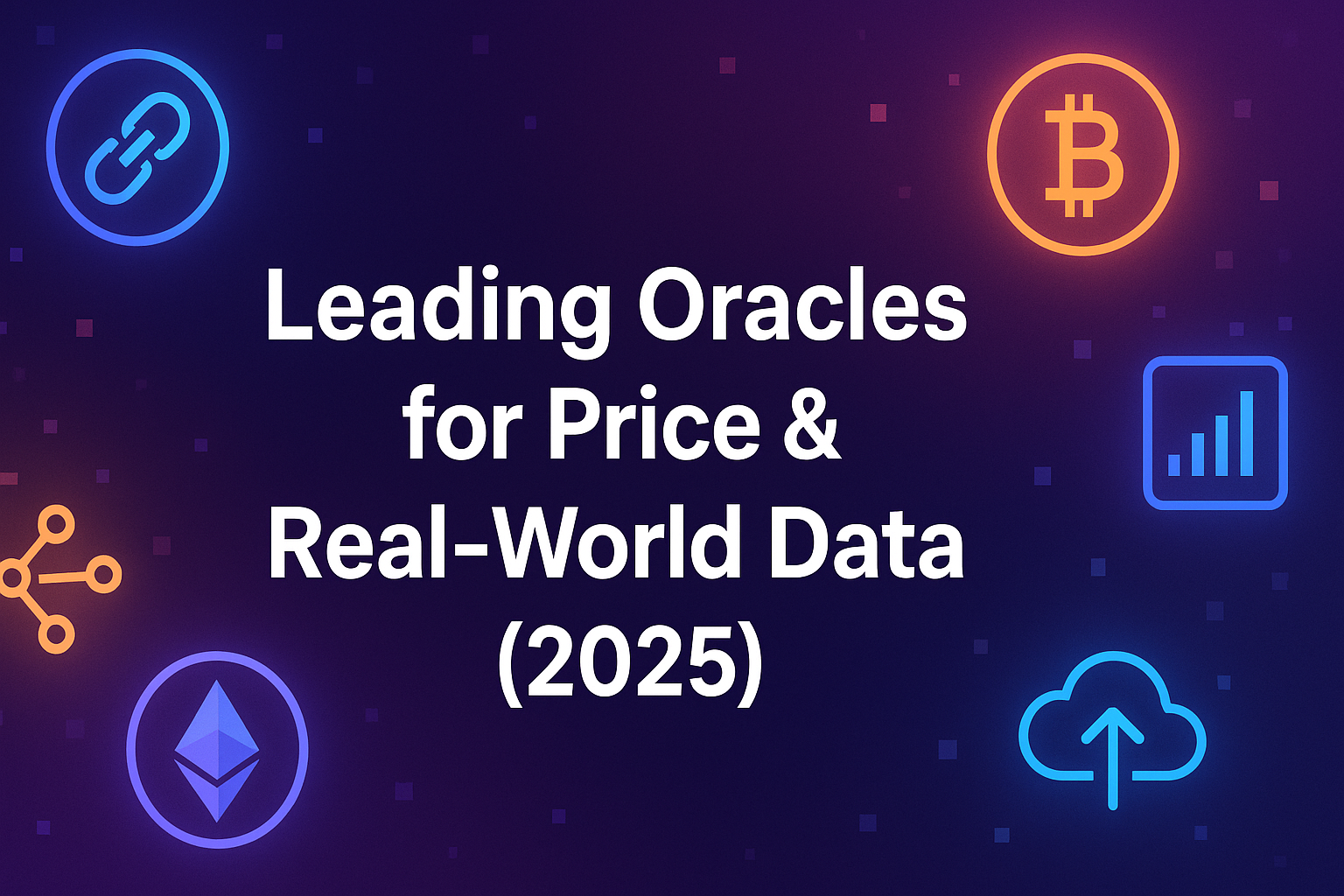
%201.svg)
%201.svg)
DeFi, onchain derivatives, RWAs, and payments don’t work without reliable oracles for price & real-world data. In 2025, latency, coverage, and security disclosures vary widely across providers, and the right fit depends on your chain, assets, and risk tolerance. This guide helps teams compare the leading networks (and their trade-offs) to pick the best match, fast.
Definition (snippet-ready): A blockchain oracle is infrastructure that sources, verifies, and delivers off-chain data (e.g., prices, FX, commodities, proofs) to smart contracts on-chain.
We prioritized depth over hype: first-party data, aggregation design, verification models (push/pull/optimistic), and RWA readiness. Secondary focus: developer UX, fees, supported chains, and transparency. If you’re building lending, perps, stablecoins, options, prediction markets, or RWA protocols, this is for you.
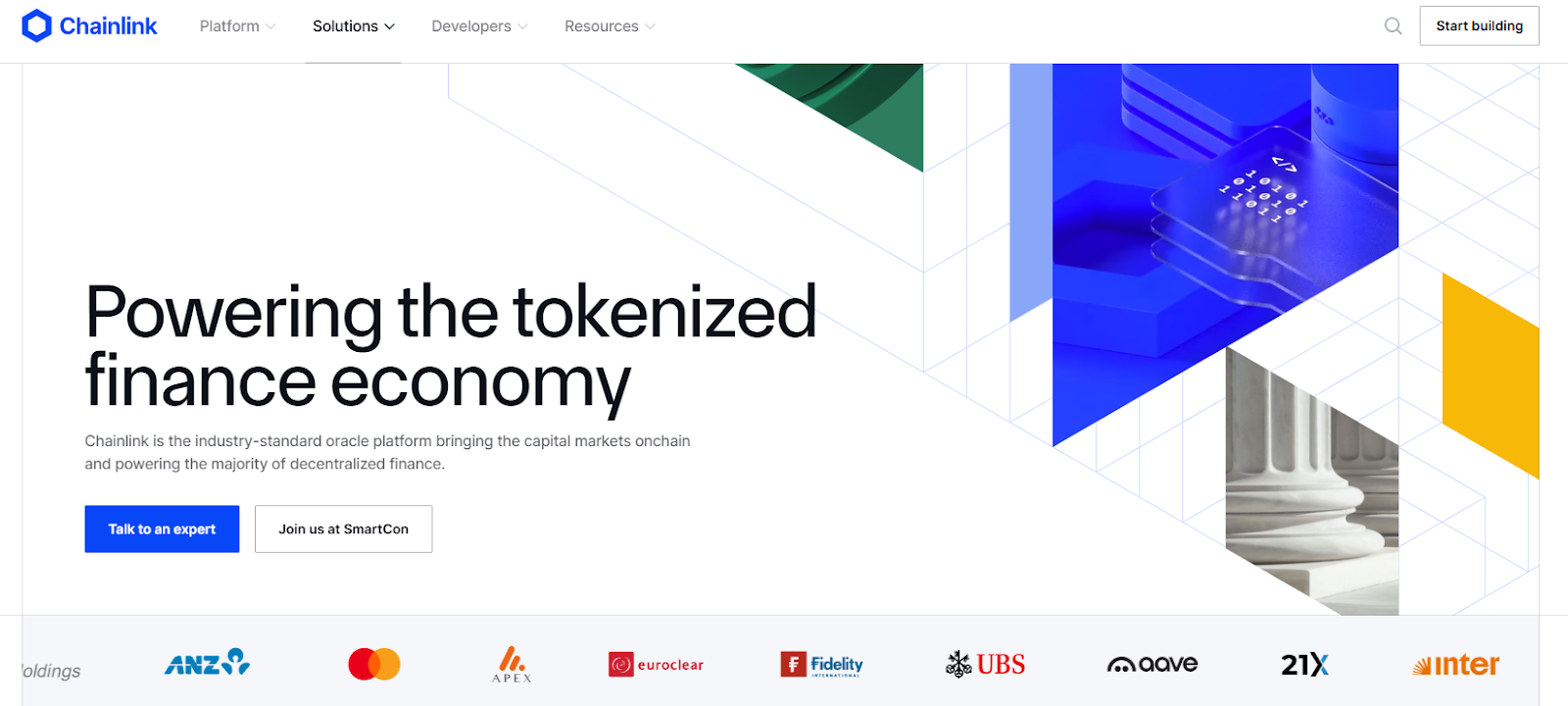
Why Use It: The most battle-tested network with mature Price/Data Feeds, Proof of Reserve, and CCIP for cross-chain messaging. Strong disclosures and large validator/operator sets make it a default for blue-chip DeFi and stablecoins. docs.switchboard.xyz
Best For: Lending/stablecoins, large TVL protocols, institutions.
Notable Features:

Why Use It: First-party publishers stream real-time prices across crypto, equities, FX, and more to 100+ chains. Pyth’s on-demand “pull” update model lets dApps request fresh prices only when needed—great for latency-sensitive perps/AMMs. Pyth Network
Best For: Perps/options DEXs, HFT-style strategies, multi-chain apps.
Notable Features:
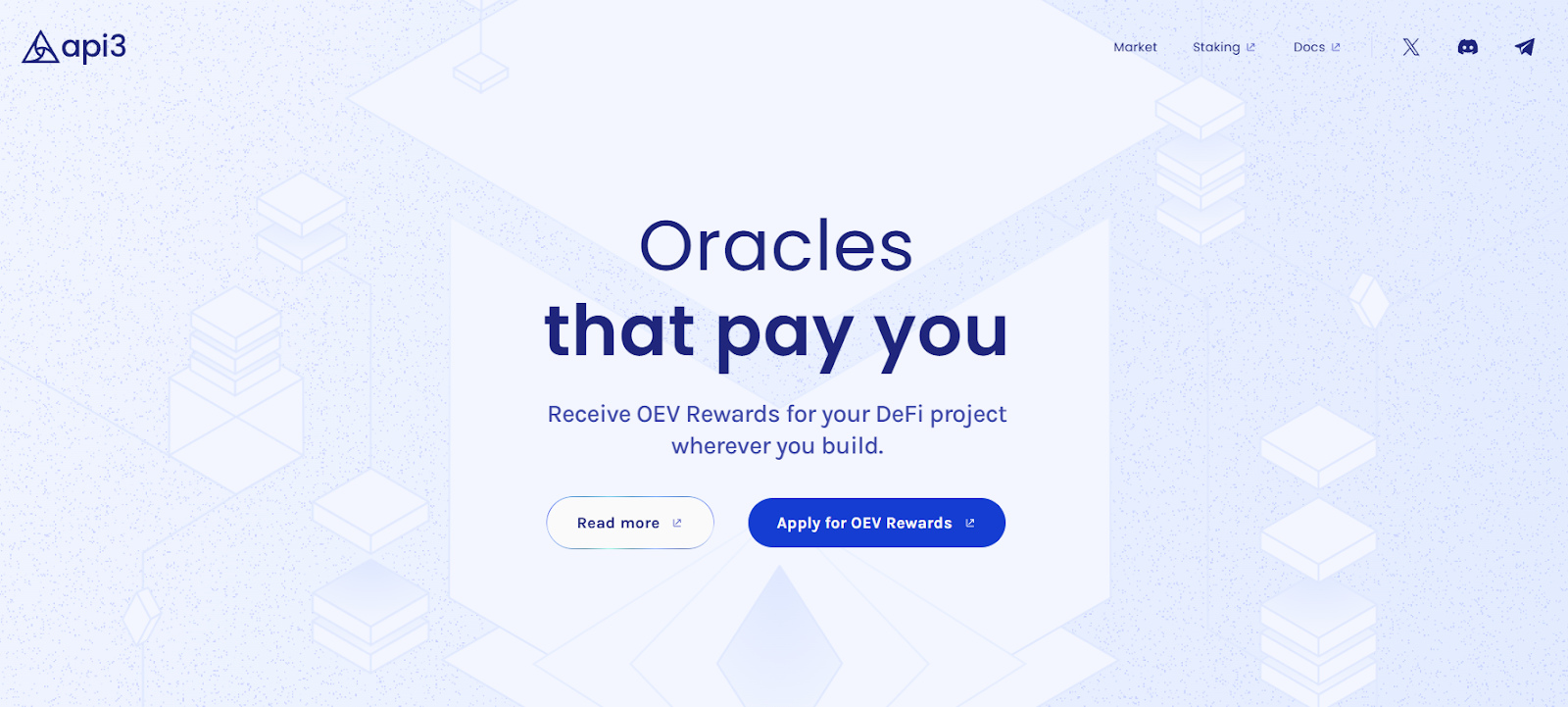
Why Use It: Airnode lets API providers run their own first-party oracles; dAPIs aggregate first-party data on-chain. OEV (Oracle Extractable Value) routes update rights to searchers and shares proceeds with the dApp—aligning incentives around updates. docs.api3.org+1
Best For: Teams that prefer direct data provenance and revenue-sharing from oracle updates.
Notable Features:
Why Use It: Developer-friendly, modular oracles with Pull, Push, and Hybrid (ERC-7412) modes. RedStone attaches signed data to transactions for gas-efficient delivery and supports custom connectors for long-tail assets and DeFi-specific needs.
Best For: Builders needing custom data models, niche assets, or gas-optimized delivery.
Notable Features:
Why Use It: Built on BandChain (Cosmos SDK), Band routes oracle requests to validators running Oracle Scripts (OWASM), then relays results to EVM/Cosmos chains. Good match if you straddle IBC and EVM worlds. docs.bandchain.org+2docs.bandchain.org+2
Best For: Cross-ecosystem apps (Cosmos↔EVM), devs who like programmable oracle scripts.
Notable Features:
Why Use It: Trustless architecture that sources trade-level data directly from origin markets (CEXs/DEXs) with transparent methodologies. Strong for custom asset sets, NFTs, LSTs, and RWA feeds across 60+ chains. DIA+1
Best For: Teams needing bespoke baskets, niche tokens/NFTs, or RWA price inputs.
Notable Features:
7. Flare Networks — Best for real-world asset tokenization and decentralized data
Why Use It: Flare uses the Avalanche consensus to provide decentralized oracles for real-world assets (RWAs), enabling the tokenization of non-crypto assets like commodities and stocks. It combines high throughput with flexible, trustless data feeds, making it ideal for bridging real-world data into DeFi applications.
Best For: Asset-backed tokens, DeFi protocols integrating RWAs, cross-chain compatibility.
Notable Features:
Fees/Notes: Variable costs based on usage and asset complexity.
Regions: Global.
Alternatives: Chainlink, DIA, RedStone.
Consider If: You want to integrate real-world assets into your DeFi protocols and need a robust, decentralized solution.
Why Use It: The Optimistic Oracle (OO) secures data by proposing values that can be disputed within a window—powerful for binary outcomes, KPIs, synthetic assets, and bespoke data where off-chain truth exists but doesn’t stream constantly. Bybit Learn
Best For: Prediction/insurance markets, bespoke RWAs, KPI options, governance triggers.
Notable Features:
Why Use It: Originated in the Maker ecosystem and now a standalone oracle network with Scribe for gas-efficient updates and transparent validator set (Infura, Etherscan, Gnosis, etc.). Strong choice if you touch DAI, Spark, or Maker-aligned RWAs. Chronicle Protocol
Best For: Stablecoins, RWA lenders, Maker-aligned protocols needing verifiable feeds.
Notable Features:
Why Use It: A multi-chain, permissionless oracle popular on Solana with Drag-and-Drop Feed Builder, TEEs, VRF, and new Oracle Quotes/Surge for sub-100ms streaming plus low-overhead on-chain reads—ideal for high-speed DeFi. docs.switchboard.xyz+1
Best For: Solana/SVM dApps, custom feeds, real-time dashboards, gaming.
Notable Features:

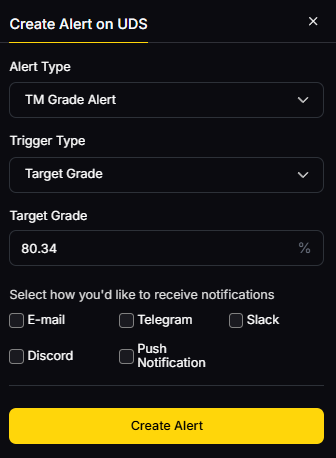
Primary CTA: Start free trial

This article is for research/education, not financial advice.
What is a blockchain oracle in simple terms?
It’s middleware that fetches, verifies, and publishes off-chain data (e.g., prices, FX, commodities, proofs) to blockchains so smart contracts can react to real-world events.
Do I need push, pull, or optimistic feeds?
Push suits stable, shared reference prices; pull minimizes cost by updating only when needed; optimistic is great for facts that benefit from challenge periods (e.g., settlement outcomes). Pyth Network+1
Which oracle is best for low-latency perps?
Pyth and Switchboard (Surge/Quotes) emphasize real-time delivery; evaluate your chain and acceptable freshness. Pyth Network+1
How do fees work?
Models vary: subscriptions/markets (API3), per-update pull fees (Pyth), or gas + operator incentives (RedStone/Tellor). Always test under stress. docs.kava.io+2Pyth Network+2
Can I get RWA data?
Yes—Chainlink PoR, DIA RWA feeds, Chronicle for Maker-aligned assets, and others offer tailored integrations. Validate licensing and data provenance. docs.switchboard.xyz+2DIA+2
The “best” oracle depends on your chain, assets, latency needs, and budget. If you need broad coverage and disclosures, start with Chainlink. If you’re building latency-sensitive perps, test Pyth/Switchboard. For first-party provenance or custom baskets, look to API3, DIA, or RedStone. For long-tail, permissionless or bespoke truths, explore Tellor or UMA.
Related Reads:
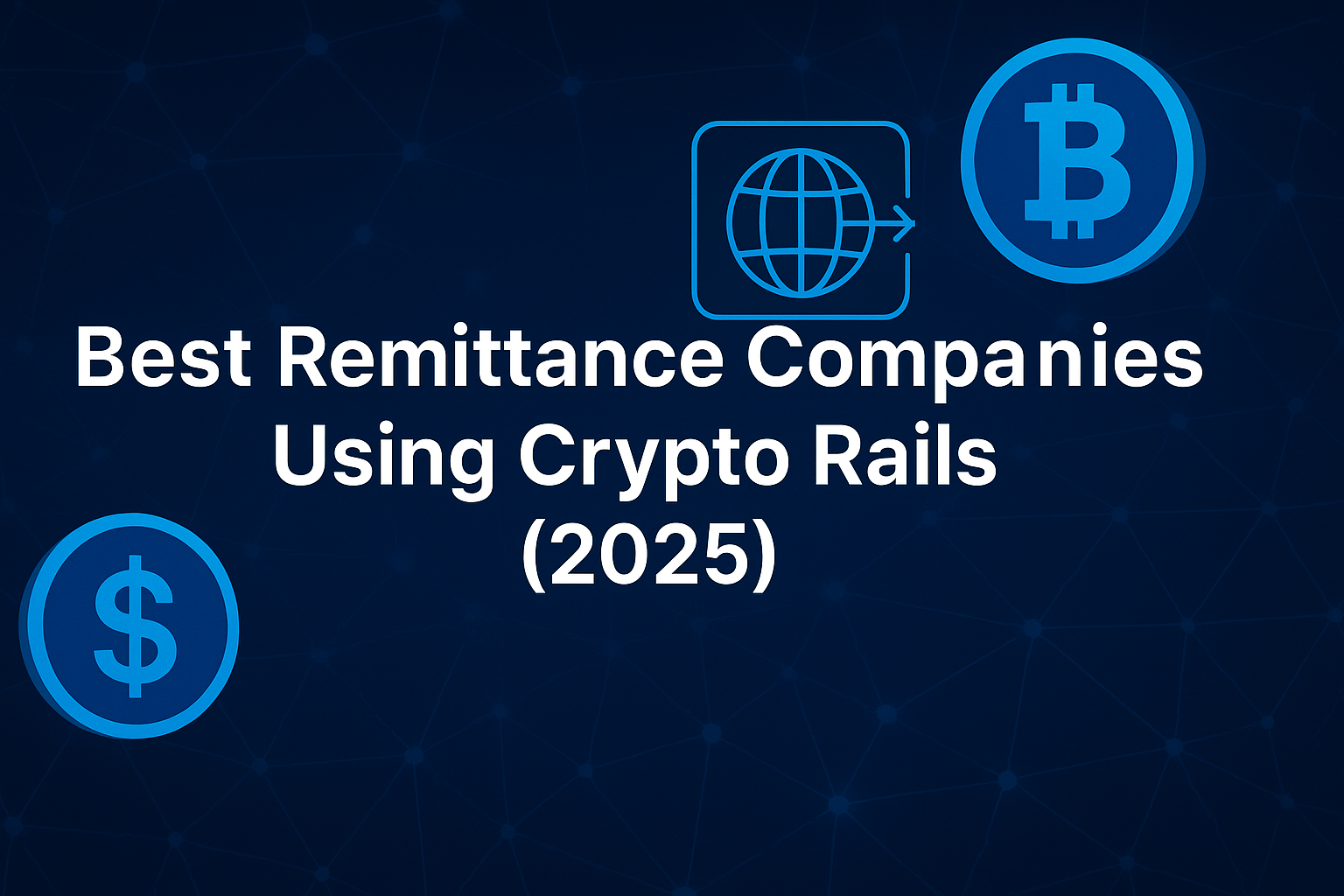
%201.svg)
%201.svg)
Cross-border money transfers are still too expensive and slow for millions of workers and families. Crypto remittance companies are changing that by using stablecoins, Lightning, and on-chain FX to compress costs and settlement time from days to minutes. In one line: crypto remittances use blockchain rails (e.g., Lightning or stablecoins like USDC) to move value globally, then convert to local money at the edge. This guide highlights the 10 best providers by liquidity, security, corridor coverage, costs, and UX—so you can pick the right fit whether you’re sending U.S.→MX/PH remittances, settling B2B payouts in Africa, or building compliant payout flows. Secondary topics we cover include stablecoin remittances, Lightning transfers, and cross-border crypto payments—with clear pros/cons and regional caveats.
Data sources prioritized official sites, docs/security pages, and disclosures; third-party market datasets used only for cross-checks. Last updated September 2025.
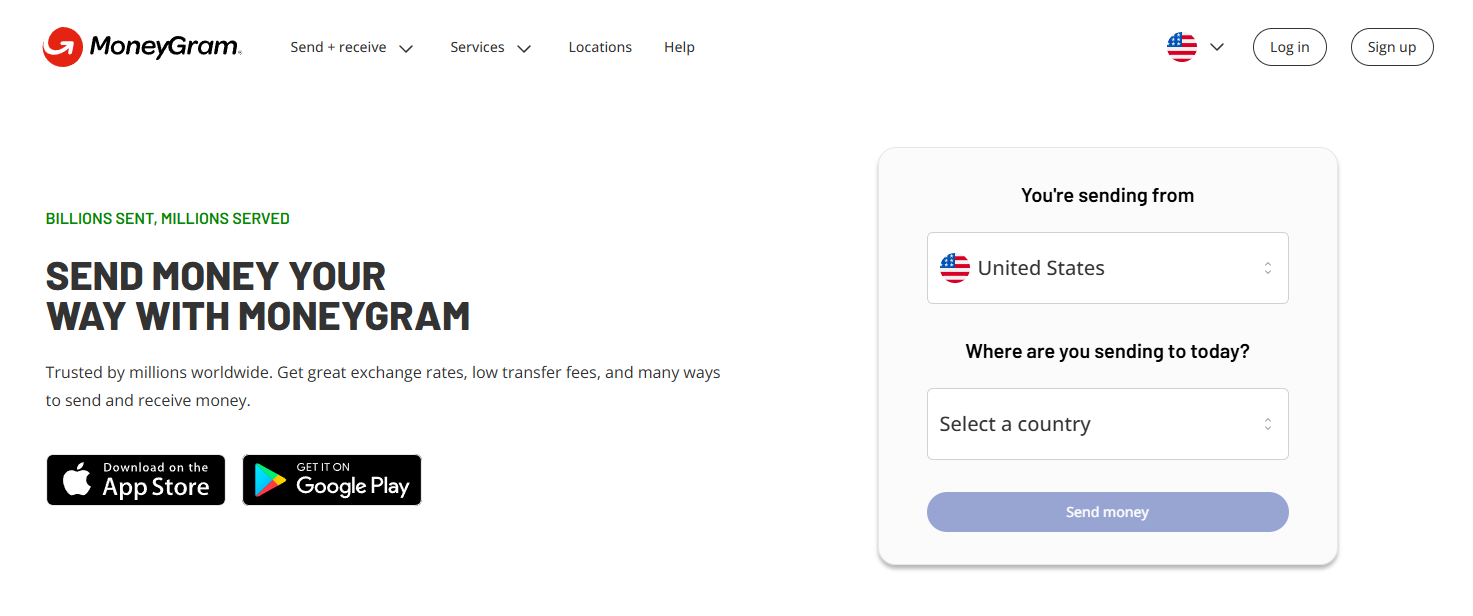
Why Use It: MoneyGram connects cash and bank rails to on-chain USDC via its Ramps network and global locations, enabling senders/receivers to move between fiat and stablecoins quickly—useful where banking access is limited. The developer docs support flexible flows and partner integrations for compliant cash-in/cash-out. anchors.stellar.org
Best For: Cash-to-crypto access • Stablecoin remittances with cash pickup • Fintechs needing global cash-out
Notable Features:

Why Use It: Strike uses the Bitcoin Lightning Network under the hood to move value, combining a fiat UX with bitcoin rails for speed and cost efficiency across corridors (e.g., U.S. to Africa/Asia/LatAm). Their “Send Globally” program highlights expanding coverage and low-friction transfers. Strike
Best For: U.S.-origin senders • Freelancers/SMBs paying abroad • Lightning enthusiasts
Notable Features:

Why Use It: Bitso powers large USD↔MXN/BRL flows, combining stablecoin rails with local payout, and publicly reports multi-billion USD remittance throughput. Their business stack (APIs, on-chain FX) targets enterprises moving funds into Mexico, Brazil, and Argentina with speed and deep local liquidity. Bitso+1
Best For: Marketplaces • Payroll/treasury teams • LATAM fintechs
Notable Features:
Why Use It: Coins.ph is a leading PH exchange/e-wallet with crypto rails, Western Union integrations, and recent initiatives using stablecoins (including PYUSD) and always-on corridors (e.g., HK↔PH). It positions blockchain/stablecoins to lower costs and improve speed for business and retail remittances. Trusted Crypto Wallet+2Trusted Crypto Wallet+2
Best For: PH recipients • Businesses seeking PH payout • Retail cash-out to banks/e-wallets
Notable Features:
Why Use It: Yellow Card provides USDC-powered transfers across 20+ African countries through Yellow Pay, with app-level FX and local payout. It emphasizes simple, fast, transparent transfers over stablecoin rails at scale.
Best For: Africa-to-Africa family support • SMB payouts • Creator/contractor payments
Notable Features:
Why Use It: Pouch abstracts the Bitcoin Lightning Network for senders and lands funds to PH banks/e-wallets in minutes. It’s a clean example of “bitcoin rails, fiat UX,” removing friction for overseas workers and micro-merchants.
Best For: U.S./global senders to PH • SMB invoices • Merchant settlement
Notable Features:
Why Use It: Tranglo is a cross-border payment hub that enabled Ripple’s On-Demand Liquidity (ODL) across its corridors, using XRP as a bridge asset to reduce pre-funding and improve speed. It provides enterprise access to a vast payout network in 100+ countries. Tranglo+2Tranglo+2
Best For: Licensed remittance operators • Fintechs • PSPs seeking APAC reach
Notable Features:
Why Use It: SBI Remit launched a remittance service using XRP through Ripple/Treasure Data/Tranglo stack, focusing on the Japan→Philippines & Vietnam corridors. For Japan-origin transfers into Southeast Asia, it’s a regulated, XRP-settled option. remit.co.jp
Best For: Japan-based senders • B2B/B2C payout into PH/VN
Notable Features:
Why Use It: Formerly BitPesa, AZA Finance specializes in enterprise cross-border payments and treasury in Africa, long known for leveraging digital asset rails to improve settlement. It supports multi-country bank and mobile-money payouts for payroll, vendor payments, and fintech flows.
Best For: Enterprises • Marketplaces • Fintech payout platforms
Notable Features:
Why Use It: Kotani Pay bridges stablecoins (notably on Celo) to mobile money (e.g., M-Pesa) so recipients can receive funds without a crypto wallet. This reduces friction and helps businesses/DAOs route funds compliantly to last-mile users.
Best For: NGOs/DAOs paying field teams • SMB payouts • Africa remittances to mobile money
Notable Features:


Primary CTA: Start free trial.

This article is for research/education, not financial advice.
What is a crypto remittance?
A cross-border transfer where value moves on-chain (e.g., Lightning, USDC) and is converted to local currency on arrival; it can cut costs and settlement time versus legacy rails.
Are crypto remittances cheaper than traditional methods?
They can be. Savings typically come from fewer intermediaries and 24/7 settlement, but FX spreads, cash-out fees, and network fees still apply. Trusted Crypto Wallet
Which is better for remittances: Lightning or stablecoins?
Lightning excels for low-cost, instant micro-payments; stablecoins are great for fiat-like value with broad exchange/wallet support. The best choice depends on corridor liquidity and payout options. Strike+1
Can I send crypto and have the recipient pick up cash?
Yes—networks like MoneyGram Ramps and select partners enable cash-in/out around USDC rails in supported countries. Availability and fees vary by location. anchors.stellar.org
What regions are strongest today?
LATAM (e.g., U.S.→Mexico), the Philippines, and many African corridors show strong on/off-ramp growth via stablecoins and Lightning. Bitso
Do I need a crypto wallet?
Not always. Many apps abstract the rails and pay out to bank accounts, e-wallets, or mobile money. Check each provider’s onboarding and recipient flow.
If you need cash pickup and stablecoin access, start with MoneyGram Ramps. For U.S.→PH or U.S.→Africa Lightning routes, consider Pouch.ph and Strike. For enterprise flows in LATAM/APAC/Africa, Bitso Business, Tranglo, SBI Remit, AZA Finance, Yellow Card, and Kotani Pay offer strong coverage—each with different strengths in corridors, payout types, and integration depth.
Related Reads:
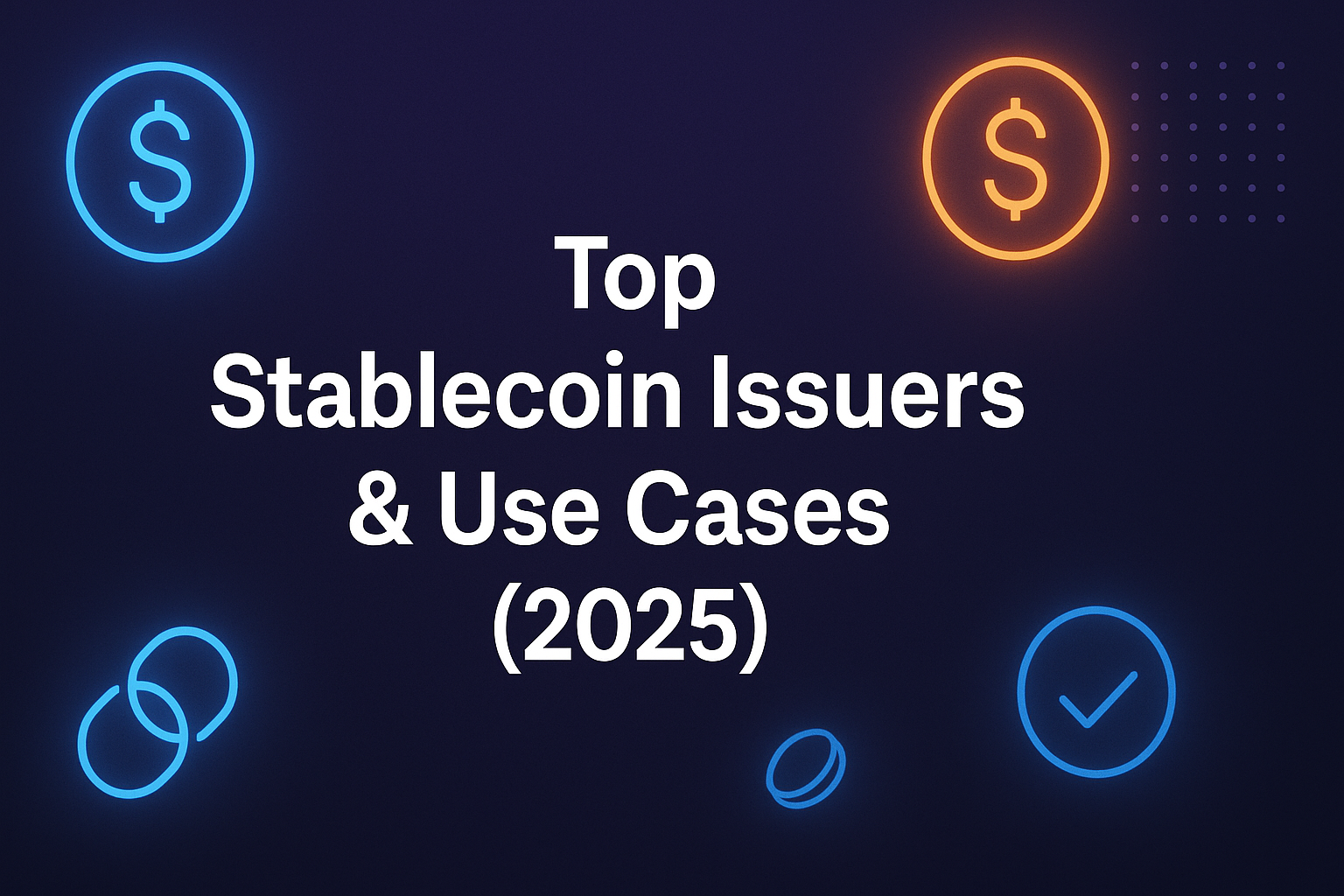
%201.svg)
%201.svg)
Stablecoins have become crypto’s settlement rail, powering exchanges, DeFi, remittances, and payments. In 2025, clarity is improving and liquidity is consolidating—so choosing stablecoin issuers with sound reserves, clear disclosures, and fit-for-purpose design matters more than ever.
Definition: A stablecoin issuer is the organization or protocol that mints and redeems a token designed to track a reference asset (usually USD), with reserves and/or mechanisms intended to hold the peg.
This guide evaluates the leading issuers globally and maps their best use cases—from high-volume trading to compliant payments and decentralized collateral. We focus on reserves quality, transparency, networks supported, institutional access, fees, and regional eligibility. Secondary topics include “USDC vs USDT,” euro/SGD options, and decentralized alternatives that can complement centralized choices. Circle+2Circle+2
We relied on official product/docs/security pages from each issuer and used market datasets (e.g., CCData/Kaiko/CoinGecko) for cross-checks only. Last updated September 2025. Circle+1
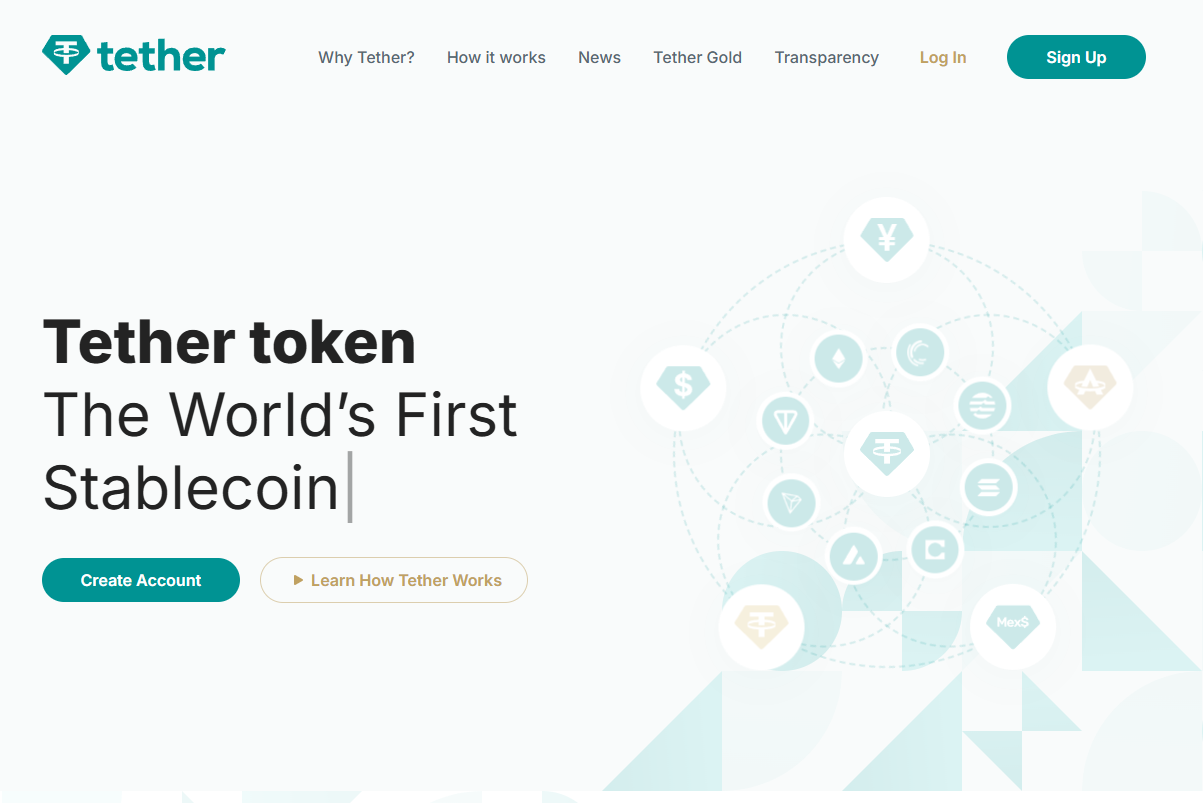
Why Use It: USD₮ (USDT) is the deepest liquidity pool across CEXs and many L2s—useful for traders and market makers who prioritize fills and routing. Tether publishes quarterly reserve attestations by BDO and a detailed reserves breakdown, improving transparency versus prior years. Tether+1
Best For: Active traders, OTC desks, market makers, emerging-market remittances.
Notable Features: Multi-chain footprint; public reserve updates; operational resilience at massive scale. Tether
Consider If: U.S. persons cannot use Tether’s own platform services under its Terms; rely on supported exchanges instead. Regions: Global (platform restrictions apply). Fees/Notes: Account verification and certain fees apply at the platform level. Tether+1
Alternatives: Circle (USDC), First Digital Labs (FDUSD).

Why Use It: Circle emphasizes transparency, monthly reserve attestations, and segregation of funds. USDC is widely integrated with banks, fintechs, and onchain apps; EURC brings a euro option under the same standards. Circle+1
Best For: Enterprises/fintechs, payment flows, compliant treasuries, DeFi power users.
Notable Features: Circle Mint for programmatic mint/redeem; monthly attestations; multi-chain support; extensive docs. Fees/Notes: Institutional fee schedule applies for certain high-volume flows. Circle+1
Regions: Global (availability varies by partner/exchange).
Alternatives: Paxos (USDP), PayPal USD (PYUSD).

Why Use It: DAI is minted against overcollateralized crypto via the Maker Protocol, giving a censorship-resistant alternative to fiat-custodied coins. The Peg Stability Module (PSM) smooths peg fluctuations by allowing swaps with other stables. docs.makerdao.com+1
Best For: DeFi natives, long-term onchain treasuries, collateralized borrowing.
Notable Features: Onchain transparency; collateral diversity with governance controls; mature integrations across DeFi. docs.makerdao.com
Consider If: Exposure to crypto collateral and governance risk differs from fiat-backed models. Regions: Global.
Alternatives: Liquity (LUSD/BOLD), Frax (frxUSD).
Why Use It: FDUSD is fully reserved and designed for 1:1 redemption; it has become a deep-liquidity quote asset on major Asian venues. Issuance moved to a BVI entity (FD121 BVI) in 2025 to support global accessibility. firstdigitallabs.com+1
Best For: Traders on Asia-focused exchanges, cross-border settlement in APAC, OTC desks.
Notable Features: Monthly attestations; segregation of assets with qualified custodians; institutional onboarding. Fees/Notes: Primary mint/redeem requires becoming a client; retail typically uses secondary markets. firstdigitallabs.com+1
Regions: Global (institutional primary; retail via exchanges).
Alternatives: Tether (USDT), Circle (USDC).
Why Use It: USDP is issued by Paxos Trust (NYDFS-regulated), held 100% in cash and cash equivalents, and redeemable 1:1. Paxos provides enterprise APIs and no-fee mint/redeem for primary customers. Paxos+1
Best For: Enterprises needing regulated counterparties, payment processors, fintechs.
Notable Features: Segregated, bankruptcy-remote client assets; Ethereum & Solana support; rich developer docs. Fees/Notes: No Paxos fee to mint/redeem USDP; bank/network fees may apply. Paxos+1
Regions: US/EU/APAC via partners; check onboarding eligibility.
Alternatives: Circle (USDC), PayPal USD (PYUSD).
Why Use It: PYUSD brings stablecoins to familiar wallets (PayPal/Venmo), with instant P2P and merchant flows for eligible U.S. users. It’s issued by Paxos Trust and is redeemable within the PayPal ecosystem; PayPal has also launched an optional rewards program for eligible U.S. users. PayPal+1
Best For: U.S. consumers and SMBs using PayPal/Venmo, payment acceptance, loyalty.
Notable Features: Wallet-native UX; on/off-ramps; integrations expanding across networks. Fees/Notes: No fees to buy/sell/hold/transfer PYUSD inside eligible U.S. PayPal balances; conversion fees apply when swapping with other crypto. PayPal
Regions: U.S. only for consumer access via PayPal/Venmo.
Alternatives: USDC (for global reach), USDP (enterprise rails).
Why Use It: USDe uses a delta-neutral mechanism (spot + perps/futures) to target dollar stability without relying solely on banks. sUSDe offers onchain, variable rewards sourced from the strategy. This is a crypto-native design and differs from fiat-redeemable models. docs.ethena.fi+1
Best For: Sophisticated DeFi users, L2 yield strategies, protocols integrating synthetic dollars.
Notable Features: Whitelist-based mint/redeem; peg supported by hedged positions; extensive docs. Fees/Notes: Not available to U.S. users; USDe is not redeemable for fiat by design. docs.ethena.fi+1
Regions: Global (restricted jurisdictions excluded).
Alternatives: DAI, frxUSD.
Why Use It: Frax introduced frxUSD, a fully collateralized, fiat-redeemable stablecoin with “enshrined custodians” while retaining Frax’s modular DeFi stack. It aims to couple institutional-grade backing with protocol-level tooling (lending/AMMs). Frax
Best For: DeFi builders, protocols needing composability, multi-product integration.
Notable Features: Hybrid custody model; Fraxtal/Frax ecosystem; onchain transparency dashboard. Fees/Notes: Details governed by Frax docs and custodial partners. Frax+1
Regions: Global (availability via exchanges/integrations).
Alternatives: USDC, DAI.
Why Use It: XSGD is a Singapore dollar stablecoin with monthly reserve attestations and a strong focus on compliant payments infrastructure across Southeast Asia. It’s widely integrated with regional wallets, OTC, and DeFi. straitsx.com+1
Best For: APAC businesses, cross-border SGD flows, FX pairs (XSGD↔USD stables).
Notable Features: Monthly attestations; issuer entities for SGD/USD; APIs for swaps/OTC. Fees/Notes: Platform and network fees apply; see issuer terms. straitsx.com
Regions: APAC (global transferability on supported chains).
Alternatives: USDC (USD rails), Monerium (EURe for EUR rails).
Why Use It: Monerium issues EURe as regulated e-money under EU rules with segregated, over-collateralized assets—designed for compliant euro settlements onchain. Tokens live on Ethereum, Gnosis, and Polygon with instant redeemability. Monerium+1
Best For: European fintechs, treasuries needing euro rails, compliant B2B payments.
Notable Features: Authorized EMI; 102% safeguarding policy; e-money legal clarity; audited financials. Fees/Notes: Published fee schedule; standard banking/network fees may apply. Monerium+1
Regions: EU/EEA (global transferability on supported chains).
Alternatives: Circle (EURC), StraitsX (XSGD for SGD).


Primary CTA: Start free trial

This article is for research/education, not financial advice.
1) What are the main types of stablecoin issuers?
Three broad models: (1) Fiat-backed (Circle, Paxos, First Digital Labs), (2) Overcollateralized crypto-backed (MakerDAO DAI; Liquity), and (3) Synthetic/hedged (Ethena USDe). Each has distinct reserve/risk properties. docs.ethena.fi+3Circle+3Paxos+3
2) Which stablecoin is best for trading liquidity?
USDT typically leads on global CEX depth and pairs, with USDC often preferred for fiat-connected flows and DeFi. Choose based on venue support and treasury needs. Tether+1
3) Can U.S. users access every stablecoin?
No. PYUSD is for eligible U.S. PayPal/Venmo users; some protocols (e.g., Ethena) restrict U.S. access to their app. Always check terms. PayPal+1
4) How do fees work for minting and redeeming?
Paxos states no fees for mint/redeem USDP/PYUSD for primary clients; Circle has institutional schedules; Tether lists platform fees. Secondary-market trades still incur exchange/gas costs. Paxos+2Circle Help+2
5) Are euro or SGD stablecoins useful?
Yes. EURC/EURe enable euro settlements under EU rules; XSGD supports APAC rails and FX paths versus USD stables. Circle+2Monerium+2
6) Is DAI safer than fiat-backed coins?
“Safer” depends on your risk lens. DAI reduces bank/custodian reliance but adds crypto-collateral and governance risk; fiat-backed coins rely on custodians and regulators. Diversification is common. docs.makerdao.com
If you need global trading liquidity, start with USDT/USDC. For enterprise-grade compliance, Circle/Paxos shine. For decentralized resilience, DAI (and Liquity) fit. For regional rails, consider XSGD (APAC) and EURe/EURC (EU). Pair the right issuer with your use case, then monitor peg, reserves, and policy changes over time.
Related Reads:
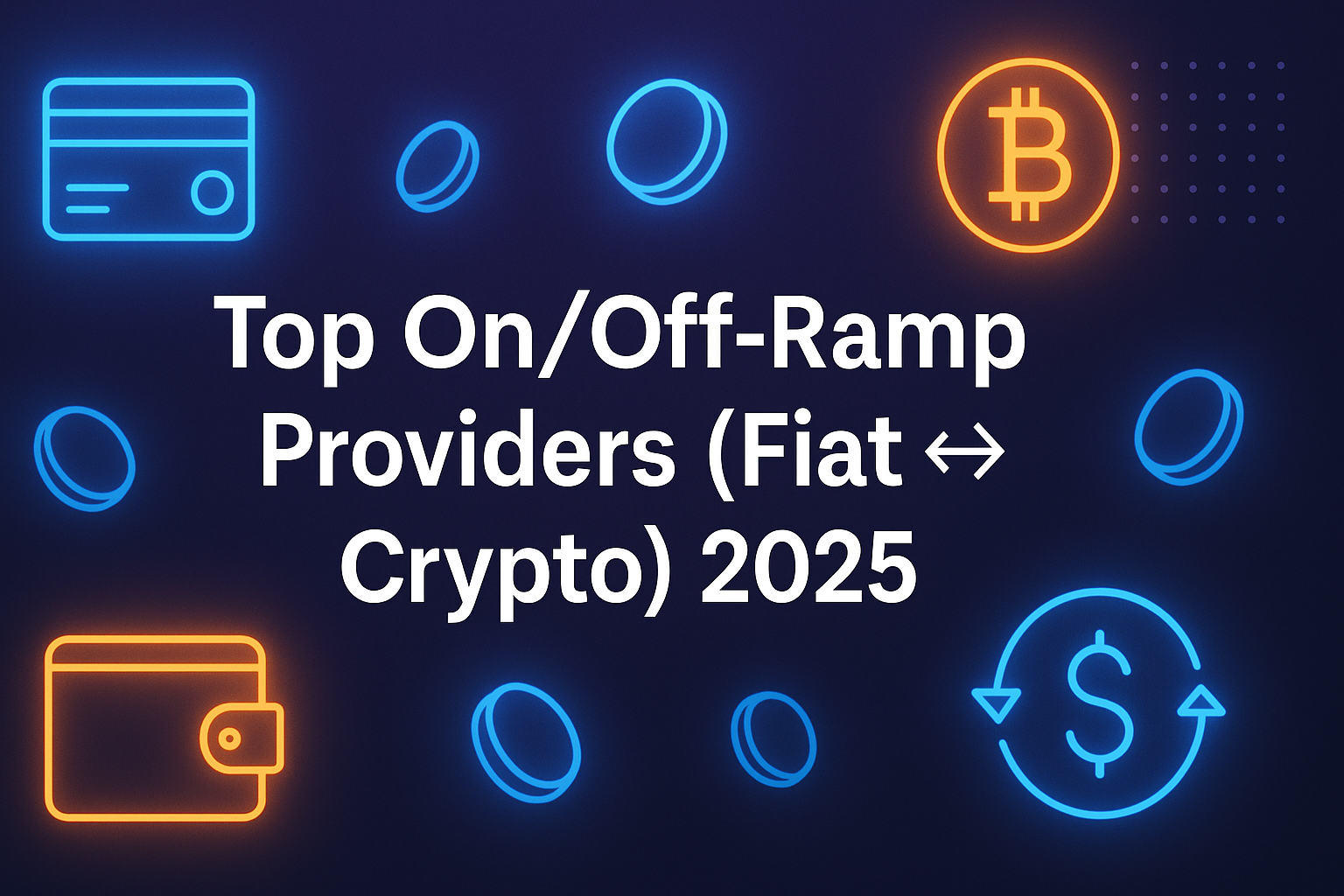
%201.svg)
%201.svg)
Getting money into and out of crypto should be fast, safe, and compliant. In 2025, wallets, dapps, exchanges, and fintechs increasingly rely on crypto on/off-ramp providers to convert fiat to tokens and cash back out to bank rails—all without forcing users to bounce between apps. Definition: an on-ramp lets users buy crypto with fiat; an off-ramp lets them sell crypto back to fiat and withdraw to bank accounts or cards. This guide is for product leaders, devs, and advanced users comparing coverage, fees, and risk controls across global options. We score providers on liquidity, security, asset/market coverage, costs, UX, and support, then recommend the best fits by use case. Secondary angles we considered: fiat to crypto onramp, crypto off-ramp, and common flows like “buy crypto with bank transfer.”
Data sources: official product/docs and security pages; licensing and disclosures; limited cross-checks with widely cited market datasets. We only link to official provider sites in this article. Last updated September 2025.
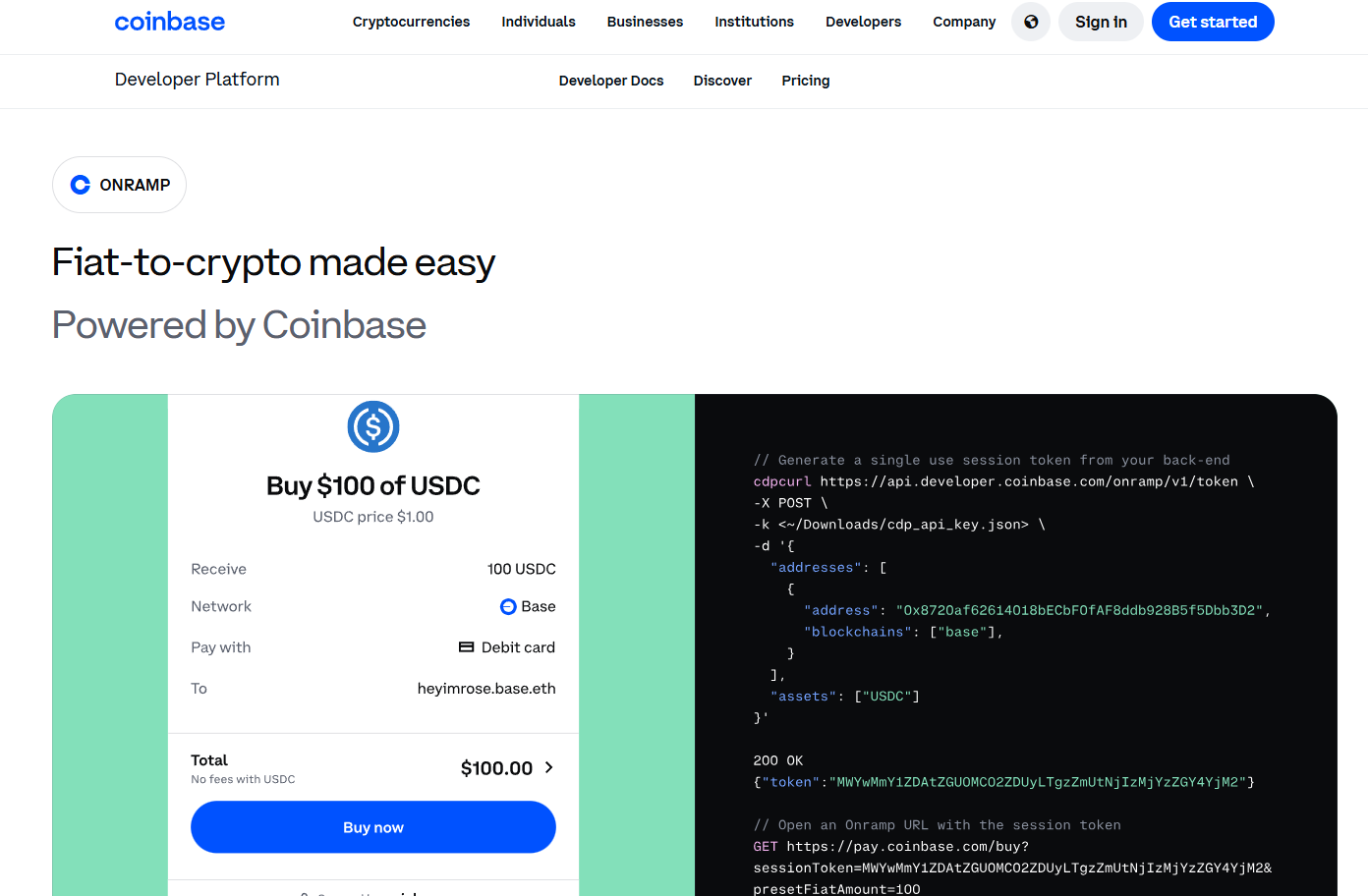
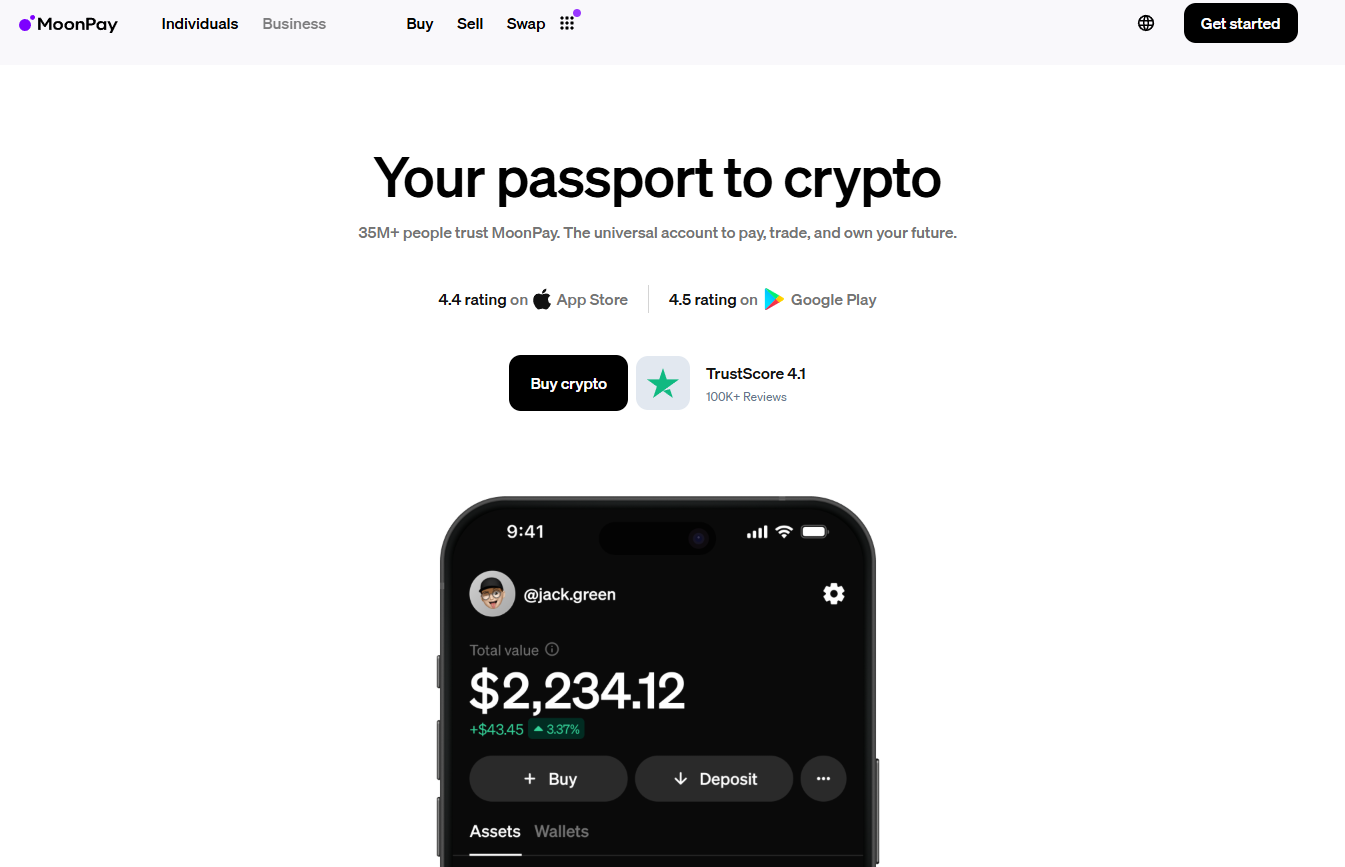
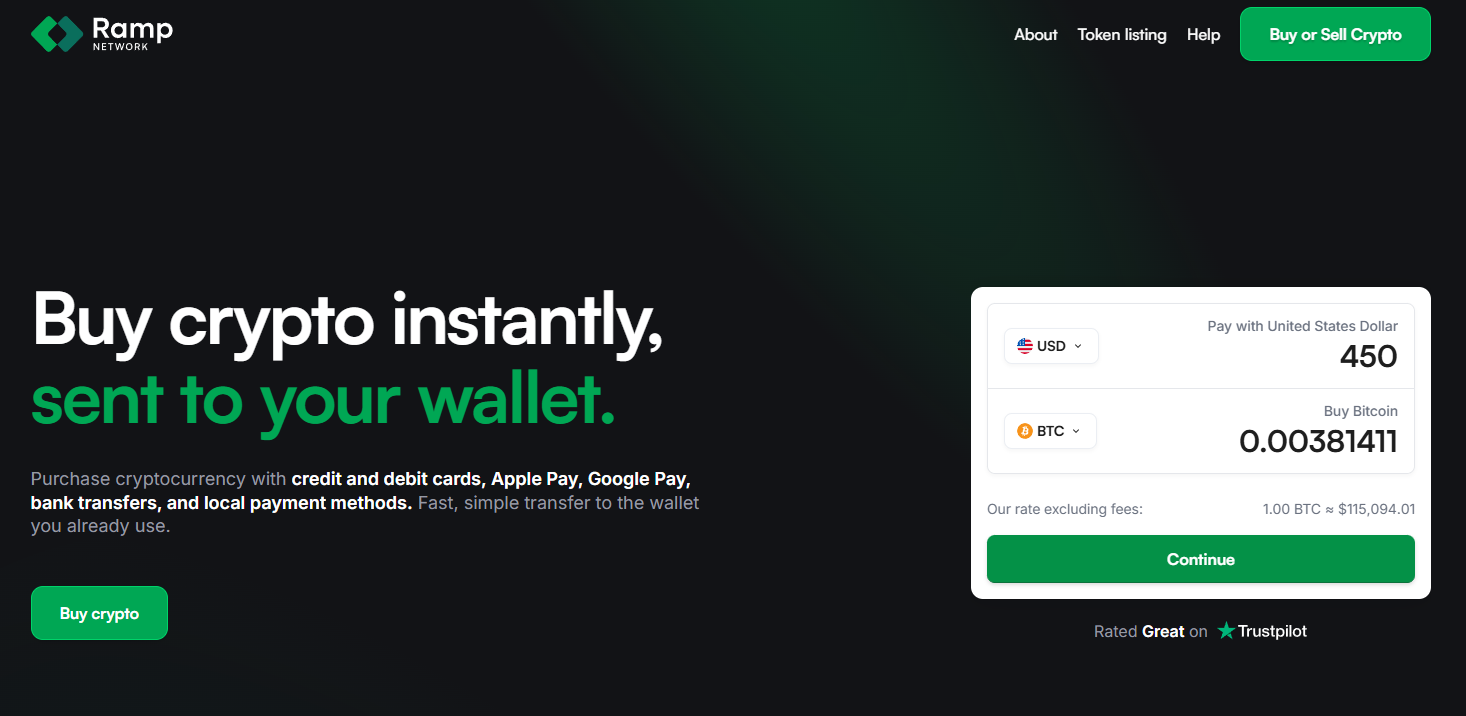

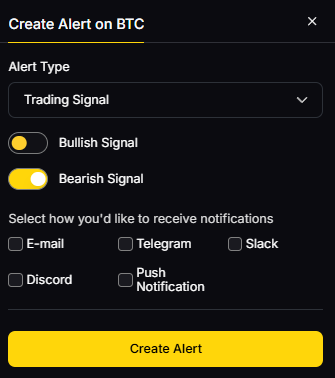
Primary CTA: Start free trial

This article is for research/education, not financial advice.
What is a crypto on-ramp vs. off-ramp?
An on-ramp lets users buy crypto with fiat (e.g., card, bank transfer). An off-ramp lets users sell crypto for fiat and withdraw to bank rails or cards. Coinbase
Which providers are best for U.S. ACH cashouts?
Coinbase Offramp and Kraken both support ACH, with method availability depending on state and account status. Coinbase Developer Docs+1
Does Stripe support off-ramp?
Stripe currently offers a fiat-to-crypto onramp (no off-ramp). It’s available in the U.S. (excluding Hawaii) and EU. Stripe Docs
Which options are strongest outside the U.S.?
For broad coverage and local rails, consider Ramp Network (Pix/SPEI), Transak (multi-network off-ramp), and Alchemy Pay (regional wallets). ramp.network+2Transak Docs+2
What about enterprise-grade compliance?
Banxa and Zero Hash publish license/compliance docs and are built for B2B integrations with higher assurance requirements. Banxa+1
The best choice depends on your region, payout rails, and risk posture. If you want a regulated U.S. ACH flow with strong docs, start with Coinbase. Need global coverage and local methods? Ramp, Transak, and Alchemy Pay shine. For enterprise and bank-grade requirements, Banxa and Zero Hash are strong bets. Exchange-based ramps via Kraken or Bitstamp work well if you also need deep liquidity.
Related Reads:
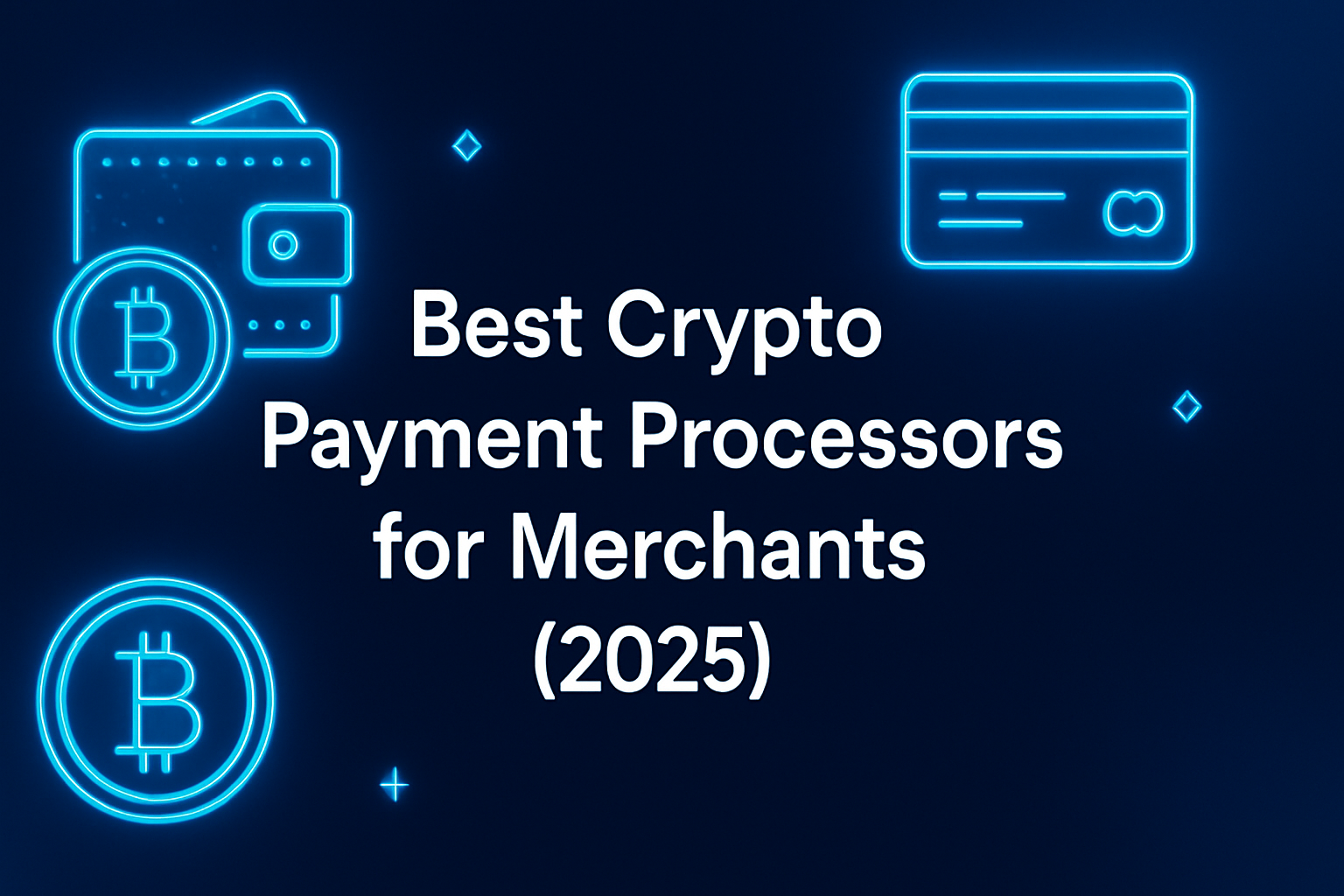
%201.svg)
%201.svg)
If you sell online (or in-store) and want to accept Bitcoin or stablecoins, choosing the best crypto payment processors can lower costs, expand global reach, and reduce chargeback risk. In one line: a crypto payment processor lets merchants accept digital assets at checkout and settle in crypto or fiat while handling pricing, invoicing, and compliance basics.
In 2025, stablecoin rails and Lightning are improving speed and costs, while major gateways add plugins for Shopify, WooCommerce, and custom APIs. This guide is for startups and enterprises comparing fees, settlement options, asset coverage, and regional availability. We blend live docs research with practical fit notes so you can pick confidently and ship faster.
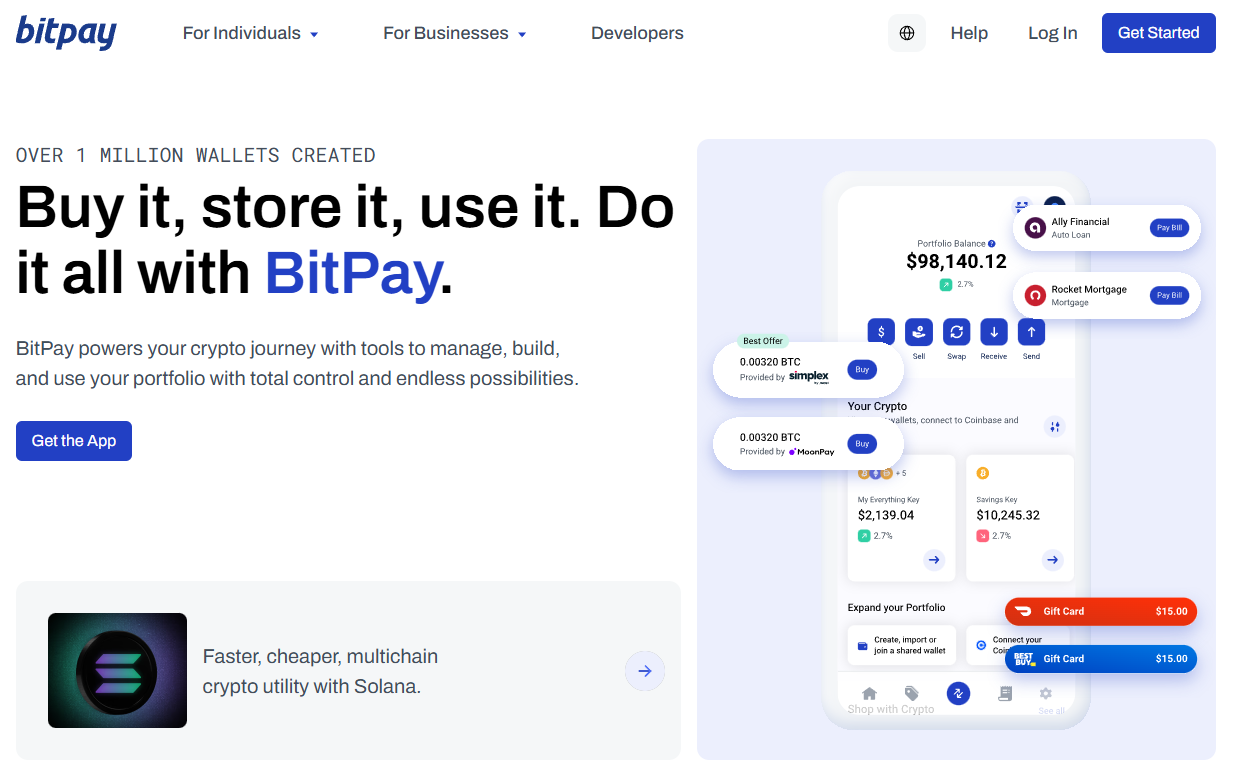
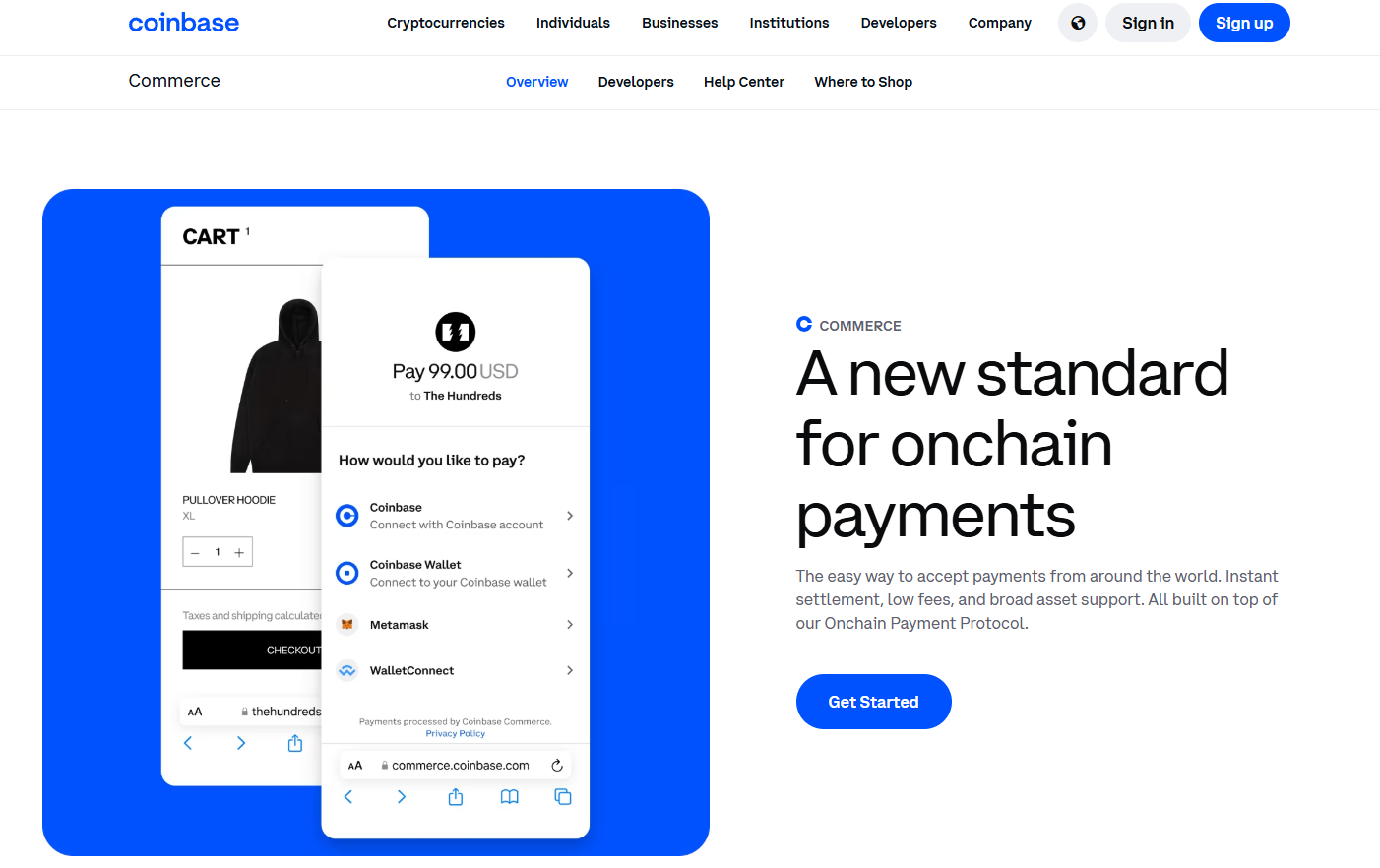
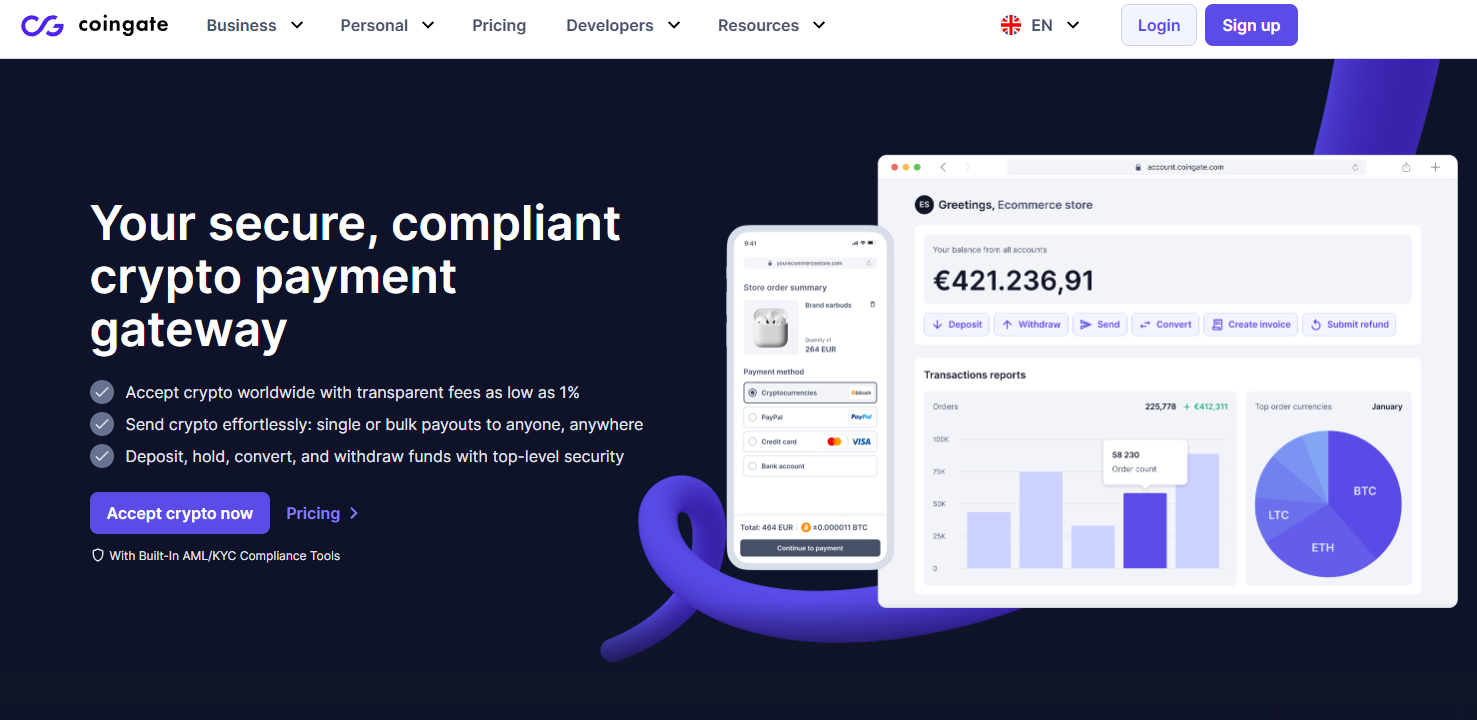

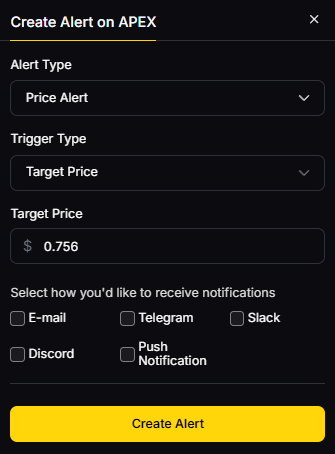
Primary CTA: Start free trial

This article is for research/education, not financial advice.
What is a crypto payment processor for merchants?
A service that lets businesses accept digital assets (e.g., BTC, USDC) and settle in crypto or fiat while handling pricing, invoicing, and basic compliance/reporting.
Are crypto fees lower than card fees?
Often yes—many gateways list ~0.5–1% base rates, though network and conversion/payout fees can apply. Compare total effective cost per order. Best Bitcoin & Crypto Payment Processor+2CoinPayments+2
Can I receive USD/EUR instead of crypto?
Most processors offer instant conversion and fiat settlement to bank accounts in supported regions. Check your vendor’s settlement currencies and schedules. OpenNode+1
Which is best for Lightning or micro-payments?
OpenNode and Lightspark are built around Lightning for instant, low-cost payments, with enterprise options and APIs. OpenNode+1
Is self-hosting a gateway possible?
Yes—projects like BTCPay Server exist for technical teams, but managed gateways reduce operational burden and add fiat settlement options.
Merchants should match checkout rails to customer demand: go BitPay/Coinbase Commerce for simplicity and brand trust, CoinGate/CoinPayments/NOWPayments for broad asset coverage, OpenNode/Lightspark for Lightning speed, and Alchemy Pay/Crypto.com Pay for hybrid rails and reach. Test fees and settlement with a pilot, then scale.
Related Reads:
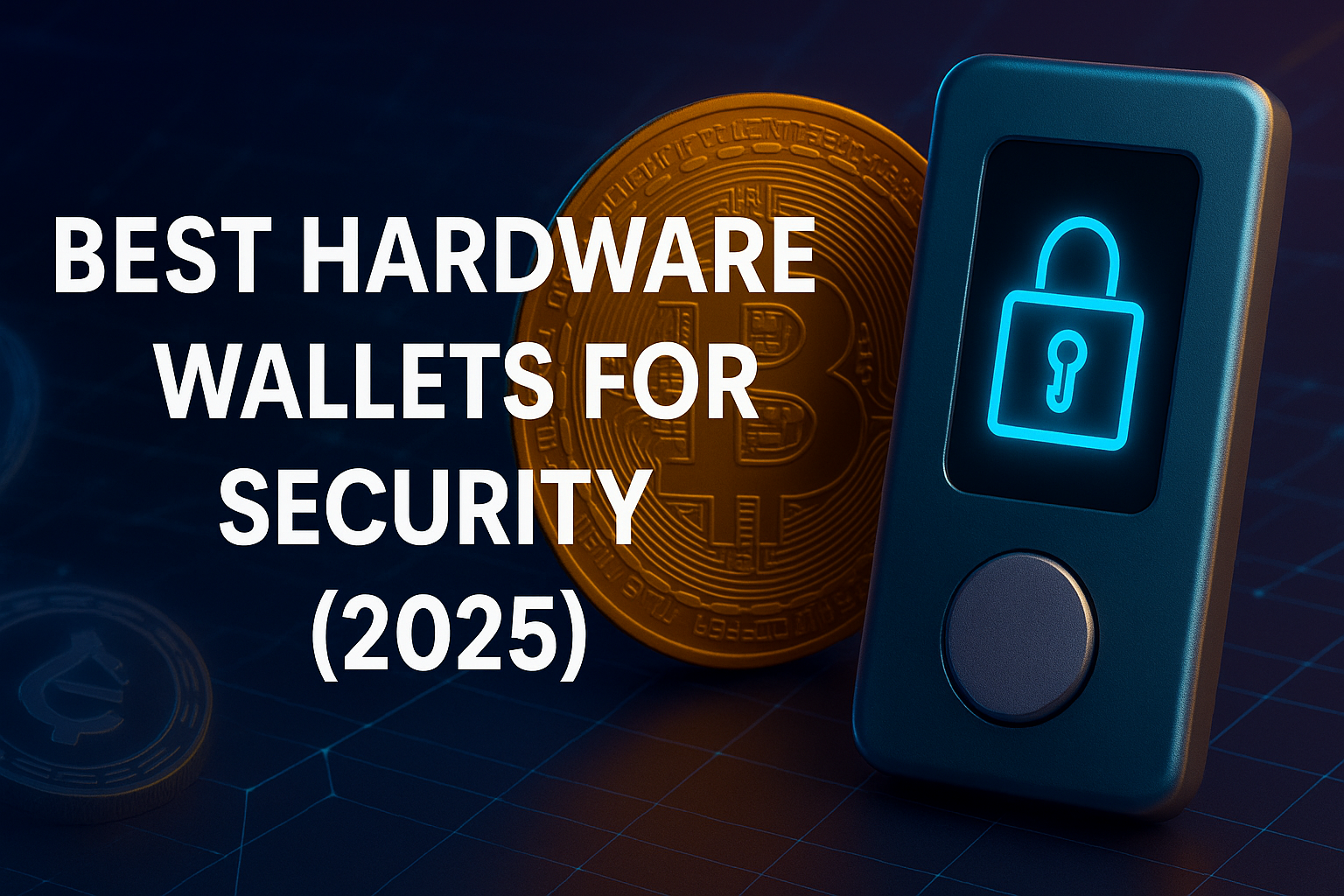
%201.svg)
%201.svg)
If you hold crypto, your keys are everything—and the best hardware wallets still offer the strongest defense against malware, phishing, and exchange failures. A hardware wallet is a dedicated, offline signing device that stores private keys and authorizes transactions without exposing secrets to the internet. In 2025, rising on-chain activity and more sophisticated wallet-drainer attacks make physical key management table stakes for both retail and pros.
This guide is for investors, traders, and builders who want maximum security without killing usability. We compare leading devices across security architecture, open-source posture, coin coverage, UX, and ecosystem readiness—so you can match the right wallet to your risk profile and stack. Secondary considerations include “crypto hardware wallet” setup flows, “cold wallet” signing paths, and “secure crypto wallet” recovery options.
We relied on official product and security pages, device docs, and transparency notes, using third-party market datasets only for cross-checks (no third-party links in body). Last updated September 2025.
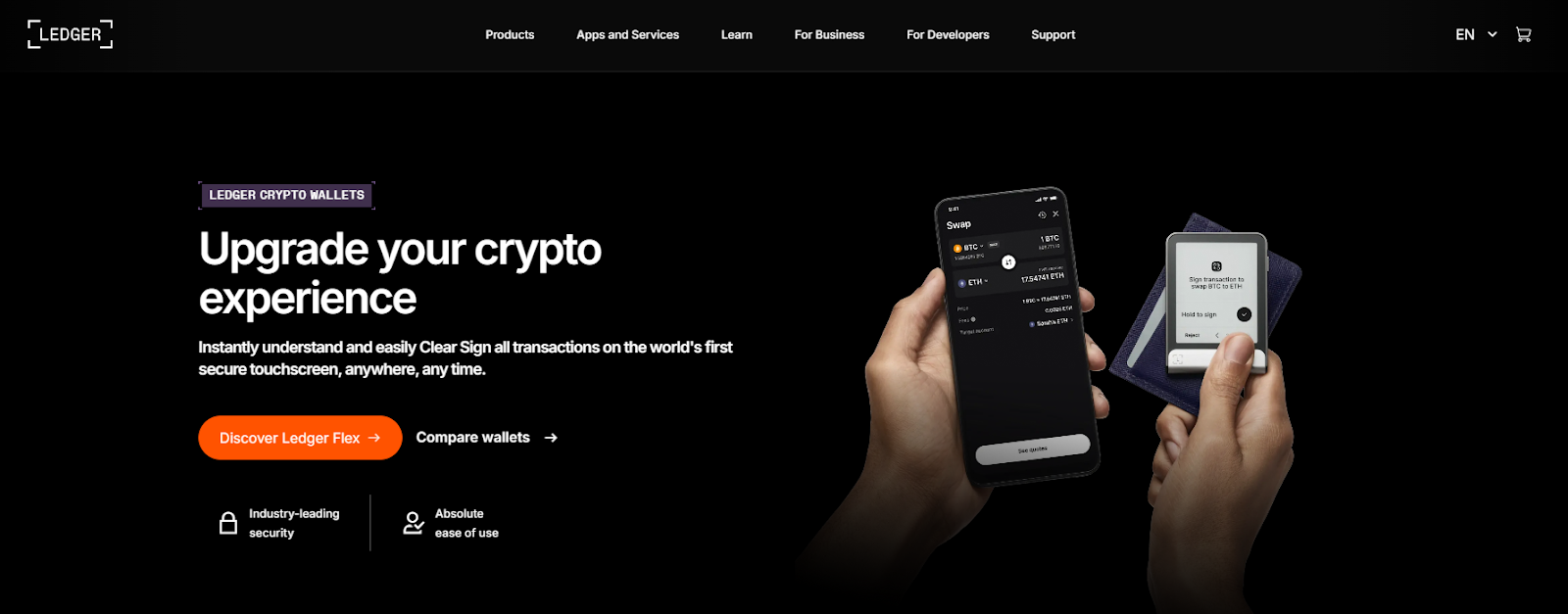

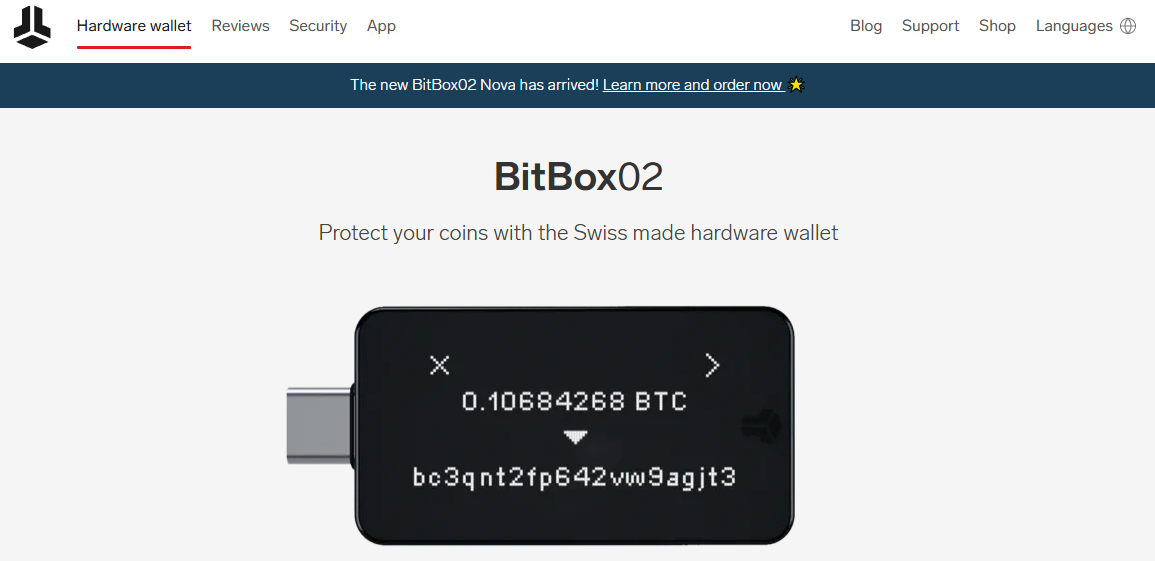
Turn cold storage into a smarter strategy:

Workflow: Research on Token Metrics → Pick assets → Acquire & secure with your wallet → Track performance + alerts.

Primary CTA: Start free trial

This article is for research/education, not financial advice.
What is a hardware wallet?
A hardware wallet is a physical device that stores private keys and authorizes transactions offline, reducing exposure to malware and phishing compared to software wallets.
Do I need a hardware wallet if I use a centralized exchange?
If an exchange is hacked or freezes withdrawals, you can lose access. A hardware wallet lets you self-custody, so you control keys and recovery—many users keep long-term holdings in cold storage and only move funds when needed.
Is a Secure Element required?
Not required, but many devices use a CC EAL5+/EAL6+ Secure Element to resist physical extraction. Open-source firmware and verifiable builds also matter—evaluate the whole model, not just one spec. Ledger
What’s the difference between air-gapped QR and USB/Bluetooth?
QR/PSBT keeps signing data offline via camera or microSD. USB/Bluetooth devices can still be safe if the secret keys never leave the secure chip and screens verify data—choose the flow you’ll actually use correctly. coldcard.com+1
Can I use one wallet for multiple chains?
Yes—multi-chain devices (e.g., Ledger, Trezor, Keystone) support many networks. Bitcoin-focused devices (COLDCARD, Passport, Jade) prioritize BTC security and workflows.
How often should I rotate or back up?
Back up at setup, test recovery once, and review backups quarterly. Rotate seeds if you suspect exposure, or after major life changes.
If you want the widest ecosystem, Ledger is tough to beat. Prefer open-source? Trezor or BitBox02 are excellent defaults. For Bitcoin vaulting, COLDCARD, Jade, or Passport shine. Need team or household management? Lattice1. Budget-friendly air-gap? SafePal. Seedless and ultra-portable? Tangem.
Pick a model you’ll use correctly—then let Token Metrics guide what goes inside it.
Related Reads:

%201.svg)
%201.svg)
Institutional custody is the backbone of professional digital-asset operations. The right institutional custody provider can safeguard private keys, segregate client assets, streamline settlement, and enable workflows like staking, financing, and governance. In one sentence: an institutional crypto custodian is a regulated organization that safekeeps private keys and operationalizes secure asset movements for professional clients. In 2025, rising ETF inflows, tokenization pilots, and on-chain settlement networks make safe storage and compliant operations non-negotiable. This guide is for funds, treasuries, brokers, and corporates evaluating digital asset custody partners across the US, EU, and APAC. We compare security posture, regulatory status (e.g., qualified custodian where applicable), asset coverage, fees, and enterprise UX—so you can shortlist fast and execute confidently.
Data sources: Official product/docs, trust/security pages, regulatory/licensing pages, and custodian legal/fee disclosures. Market size/sentiment cross-checked with widely cited datasets; we did not link third parties in-body.
Last updated September 2025.
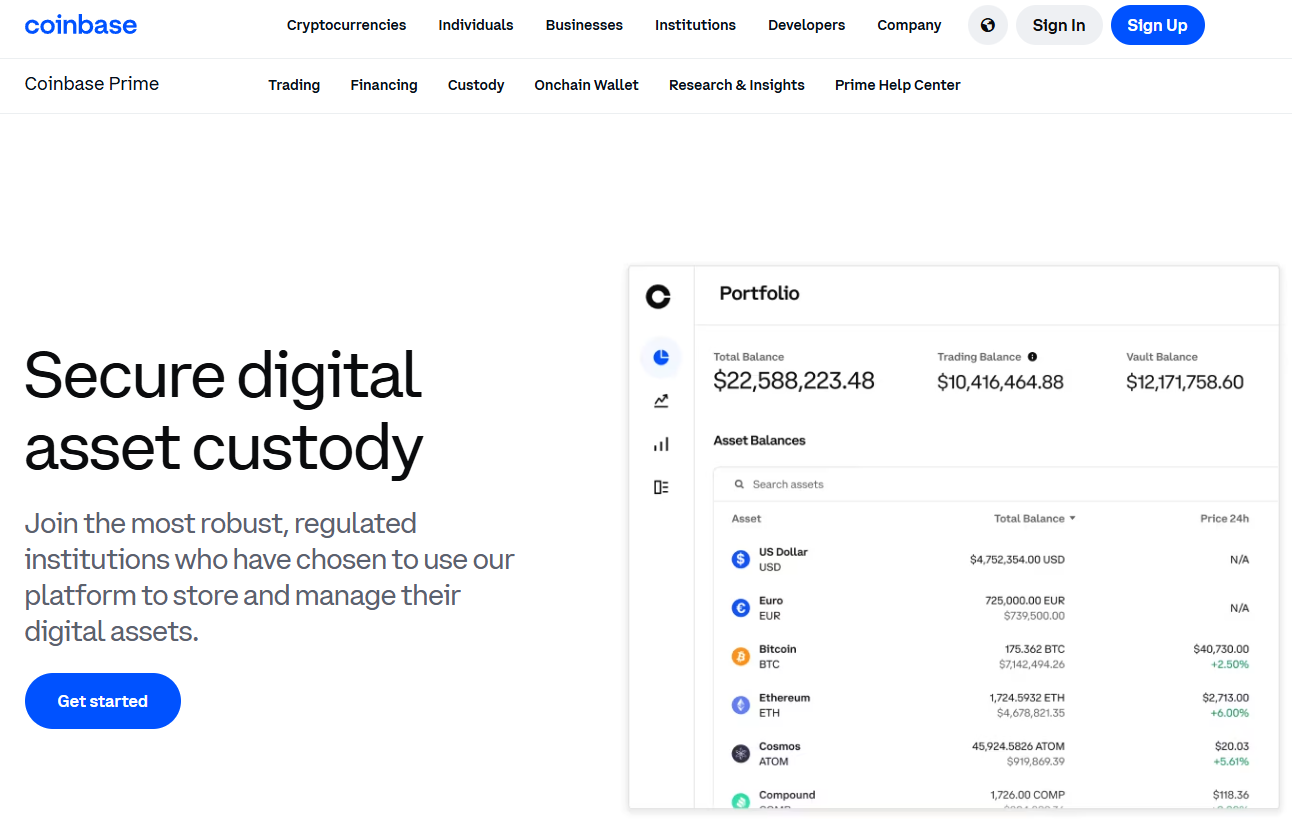
Why Use It: Coinbase Custody Trust Company is a NY state-chartered trust and qualified custodian, integrated with Prime trading, staking, and Web3 workflows. Institutions get segregated cold storage, SOC 1/2 audits, and policy-driven approvals within a mature prime stack. Coinbase+2Coinbase+2
Best For: US managers, ETF service providers, funds/treasuries that need deep liquidity + custody.
Notable Features:

Why Use It: A division of Fidelity with an integrated custody + execution stack designed for institutions, offering cold-storage execution without moving assets and traditional operational governance. Fidelity Digital Assets+1
Best For: Asset managers, pensions, corporates seeking a blue-chip brand and conservative controls.
Notable Features:
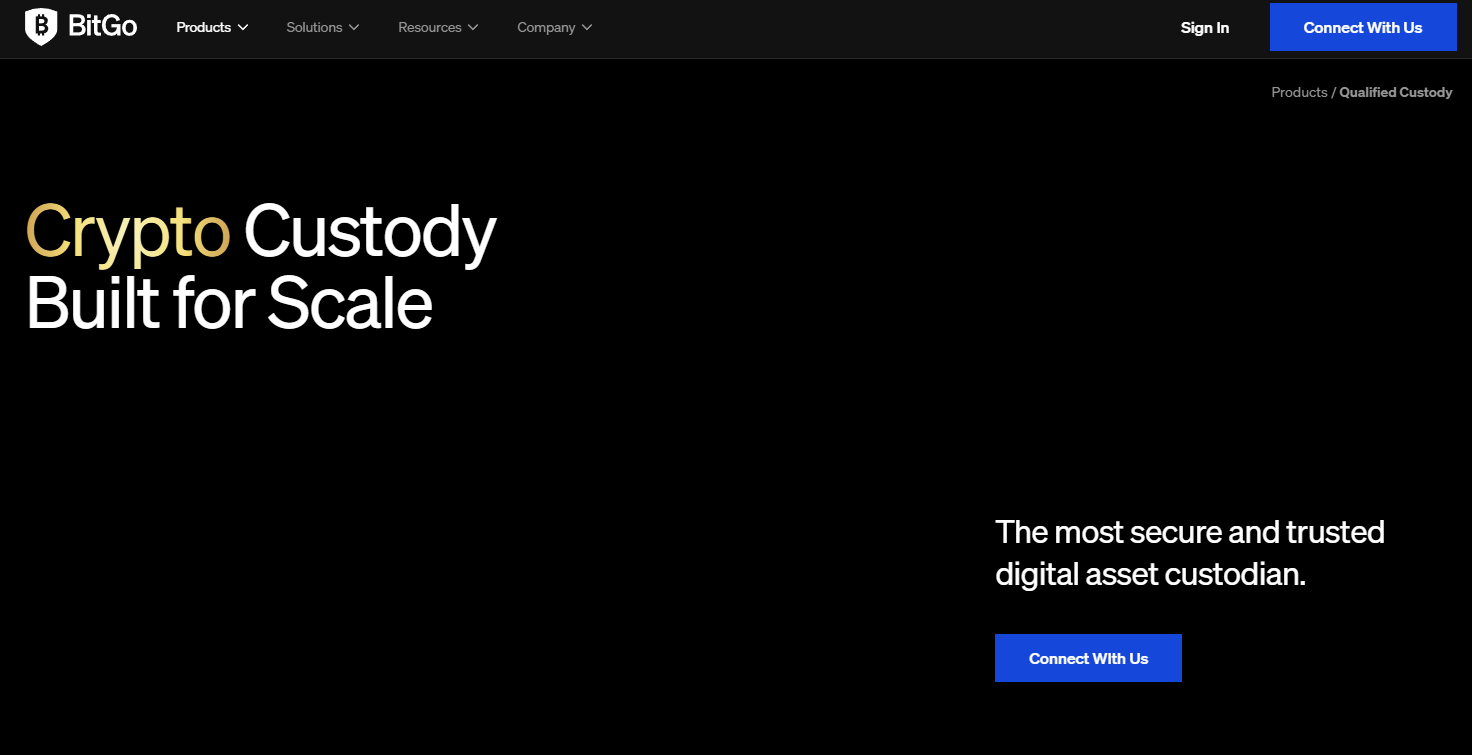
Why Use It: BitGo operates qualified custody entities with coverage across North America, EMEA, and APAC, plus robust policy controls and detailed billing methodology for AUC. The Digital Asset Infrastructure Company+1
Best For: Funds, market makers, and enterprises needing global entity flexibility.
Notable Features:
Why Use It: The only crypto-native bank with an OCC charter in the US; a qualified custodian with staking and governance alongside institutional custody. Anchorage+1
Best For: US institutions that want bank-level oversight and crypto-native tech.
Notable Features:
Why Use It: America’s oldest bank runs an institutional Digital Assets Platform for safekeeping and on-chain services, built on its global custody foundation—ideal for asset-servicing integrations. BNY+1
Best For: Asset servicers, traditional funds, and banks needing large-scale controls.
Notable Features:
Why Use It: Gemini Trust Company is a NY-chartered fiduciary and qualified custodian with air-gapped cold storage, role-based governance, and SOC reports—plus optional insurance coverage for certain assets. Gemini+1
Best For: Managers and corporates prioritizing conservative cold storage.
Notable Features:
Why Use It: Nomura-backed Komainu operates regulated custody with segregation and staking, supported by licenses/registrations across Jersey, the UAE (Dubai VARA), the UK, and Italy—useful for cross-border institutions. Komainu+1
Best For: Institutions needing EMEA/Middle East optionality and staking within custody.
Notable Features:
Why Use It: Backed by Standard Chartered, Zodia provides institutional custody with air-gapped cold storage, standardized controls, and licensing/registrations across the UK, Ireland, Luxembourg, and Abu Dhabi (ADGM). zodia-custody.com+1
Best For: Asset managers and treasuries seeking bank-affiliated custody in EMEA.
Notable Features:
Why Use It: FINMA-regulated Swiss bank providing off-balance-sheet crypto custody, staking, and Sygnum Connect—a 24/7 instant settlement network for fiat, crypto, and stablecoins. Sygnum Bank+1
Best For: EU/Asia institutions valuing Swiss regulation and bank-grade controls.
Notable Features:
Why Use It: A fully licensed APAC custodian offering on-chain segregation, role-segregated workflows, staking, and—in 2025—obtained a MAS Major Payment Institution license to offer DPT services in Singapore, rounding out custody + settlement. Hex Trust+1
Best For: Funds, foundations, and corporates across Hong Kong, Singapore, and the Middle East.
Notable Features:
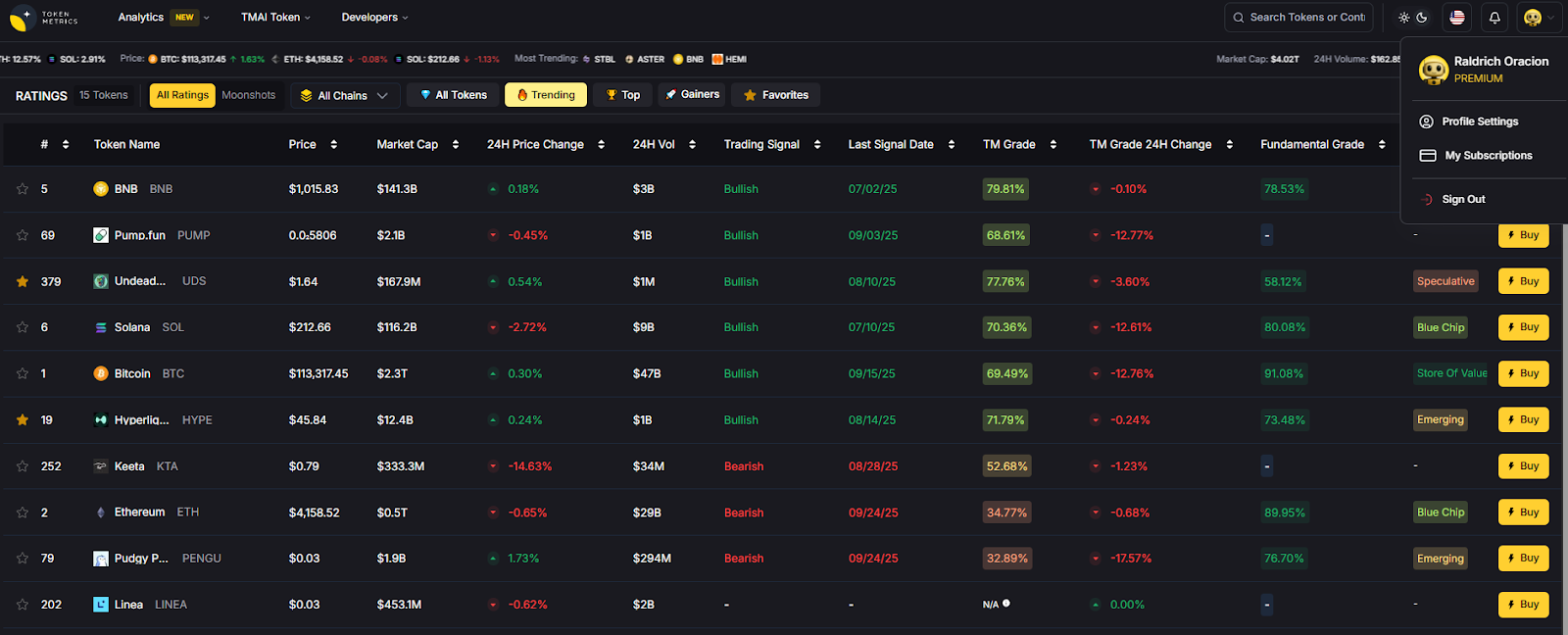

Primary CTA: Start free trial.

This article is for research/education, not financial advice.
What is a qualified custodian in crypto?
A qualified custodian is a regulated entity (e.g., trust company or bank) authorized to hold client assets with segregation and audited controls, often required for investment advisers. Look for clear disclosures, SOC reports, and trust/bank charters on official pages. Coinbase+1
Do I need a qualified custodian for my fund?
Many US advisers and institutions require qualified custody under their compliance frameworks; your legal counsel should confirm. When in doubt, choose a trust/bank chartered provider with documented segregation and audits. Coinbase
Which providers support staking from custody?
Anchorage, Coinbase Prime, Komainu, Sygnum, and Hex Trust offer staking workflows from custody (asset lists vary). Confirm asset-by-asset support and commissions. Hex Trust+4Anchorage+4Coinbase+4
How are fees structured?
Most providers price custody in annualized basis points (bps) on average assets under custody; some publish methodologies or fee schedules. Network fees are usually passed through. The Digital Asset Infrastructure Company
Can I keep assets off-exchange and still trade?
Yes—prime/custody integrations and instant-settlement networks let you trade while keeping keys in custody, reducing counterparty risk. Examples include Coinbase Prime and Sygnum Connect. Coinbase+1
Are there regional restrictions I should know about?
Licensing/availability varies (e.g., Hex Trust operates under MAS MPI in Singapore; Zodia holds permissions across UK/EU/ADGM). Always confirm eligibility for your entity and region. Hex Trust+1
If you operate in the US with strict compliance needs, start with Coinbase Prime, Fidelity, or Anchorage. For bank-backed EMEA coverage, look to BNY Mellon or Zodia. For Swiss banking controls and instant settlement, Sygnum stands out; in APAC, Hex Trust offers strong licensing and workflows. BitGo and Komainu excel when you need multi-jurisdiction flexibility.
Related Reads:
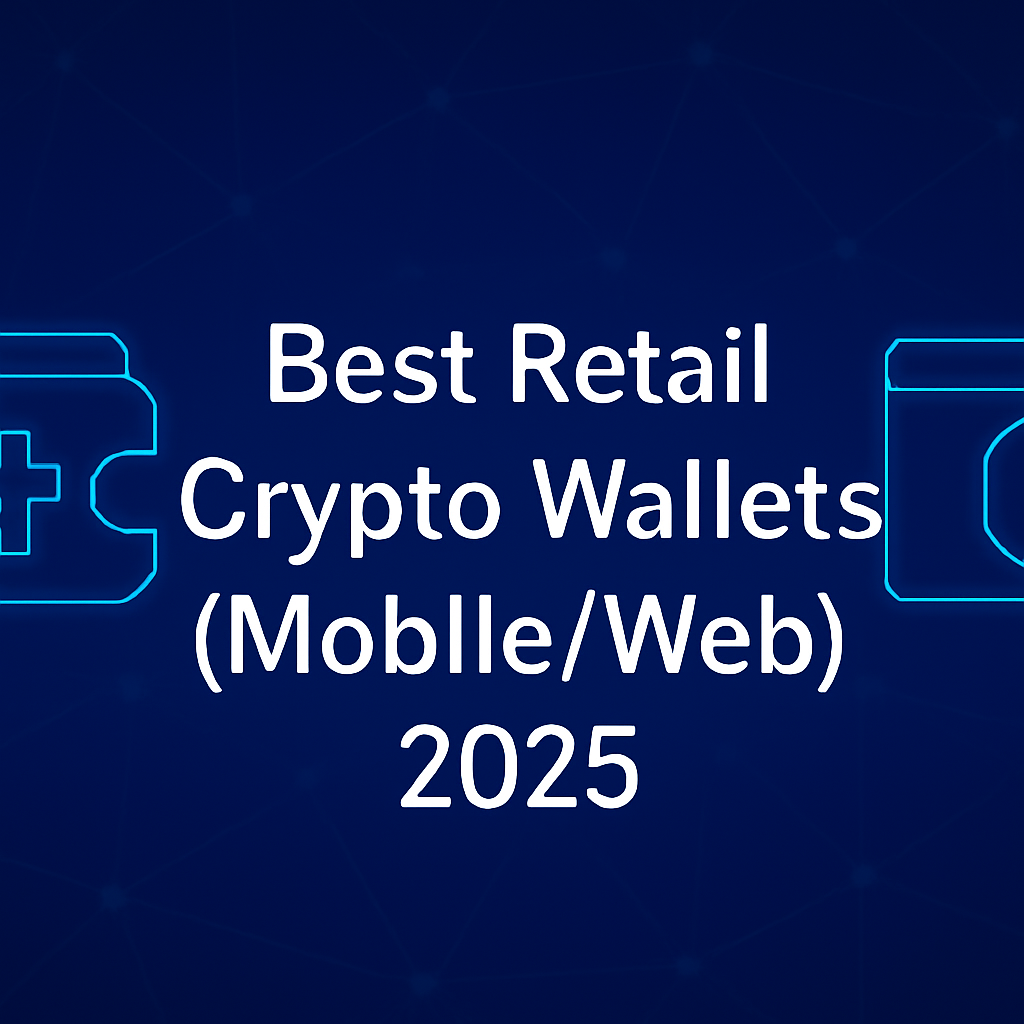
%201.svg)
%201.svg)
Retail-friendly mobile and web wallets make crypto usable—on your phone and in your browser—without relying on a centralized custodian. This guide ranks the best retail crypto wallets for 2025 so you can safely store, send, swap, and explore Web3. A crypto wallet is software that holds your keys and lets you sign transactions; self-custody means you control those keys.
We focus on practical needs: everyday buys, swaps, NFT viewing, multi-chain coverage, and clear fees. Expect mainstream names alongside rising multichain players. Secondary considerations include mobile crypto wallet UX, web3 wallet dapp access, and self-custody wallet security. If you’re new, start with a wallet that offers simple onboarding and robust recovery. If you’re advanced, look for pre-transaction risk checks, multichain swaps, and hardware support.

Why Use It: The most ubiquitous Web3 wallet, MetaMask balances power and familiarity. It’s everywhere dapps are, with mobile + browser extension, good network support, and strong swap/bridge routing in-app. Smart Transactions and built-in security alerts improve reliability for everyday users. MetaMask
Best For: EVM users, NFT collectors, L2 explorers, DeFi regulars.
Notable Features: Smart Transactions; Swaps/Bridge aggregator; MetaMask Learn; mobile + major browsers. MetaMask+1
Consider If: You want explicit fee transparency—MetaMask Swaps includes a 0.875% service fee (plus network gas). MetaMask Help Center
Alternatives: Trust Wallet, OKX Wallet.
Regions: Global.
Fees Notes: Network fees; MetaMask Swaps service fee 0.875%. MetaMask Help Center
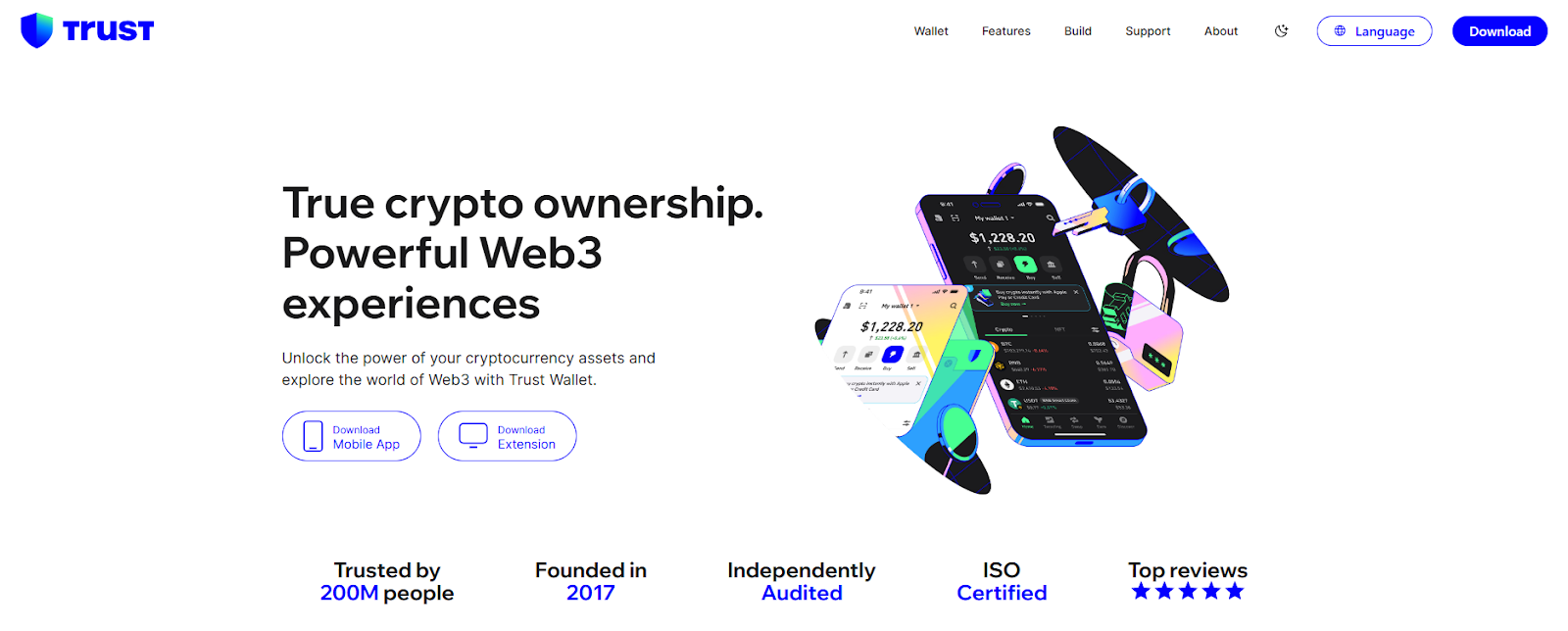
Why Use It: Trust Wallet offers a simple, one-stop experience: buy, send, swap, stake, and manage NFTs across many chains. Its mobile app is fast, and the extension integrates with popular EVM and non-EVM chains. Trust Wallet+1
Best For: Beginners who want breadth; multichain NFT holders; mobile-first users.
Notable Features: Built-in DApp browser; simplified swaps with gas optimization; staking flows. Trust Wallet
Consider If: You want no added swap fee—Trust says it doesn’t charge extra on swaps (you still pay network/third-party fees). Trust Wallet
Alternatives: MetaMask, Crypto.com Onchain.
Regions: Global.
Fees Notes: Network/partner fees apply; Trust states no added in-app swap fee. Trust Wallet
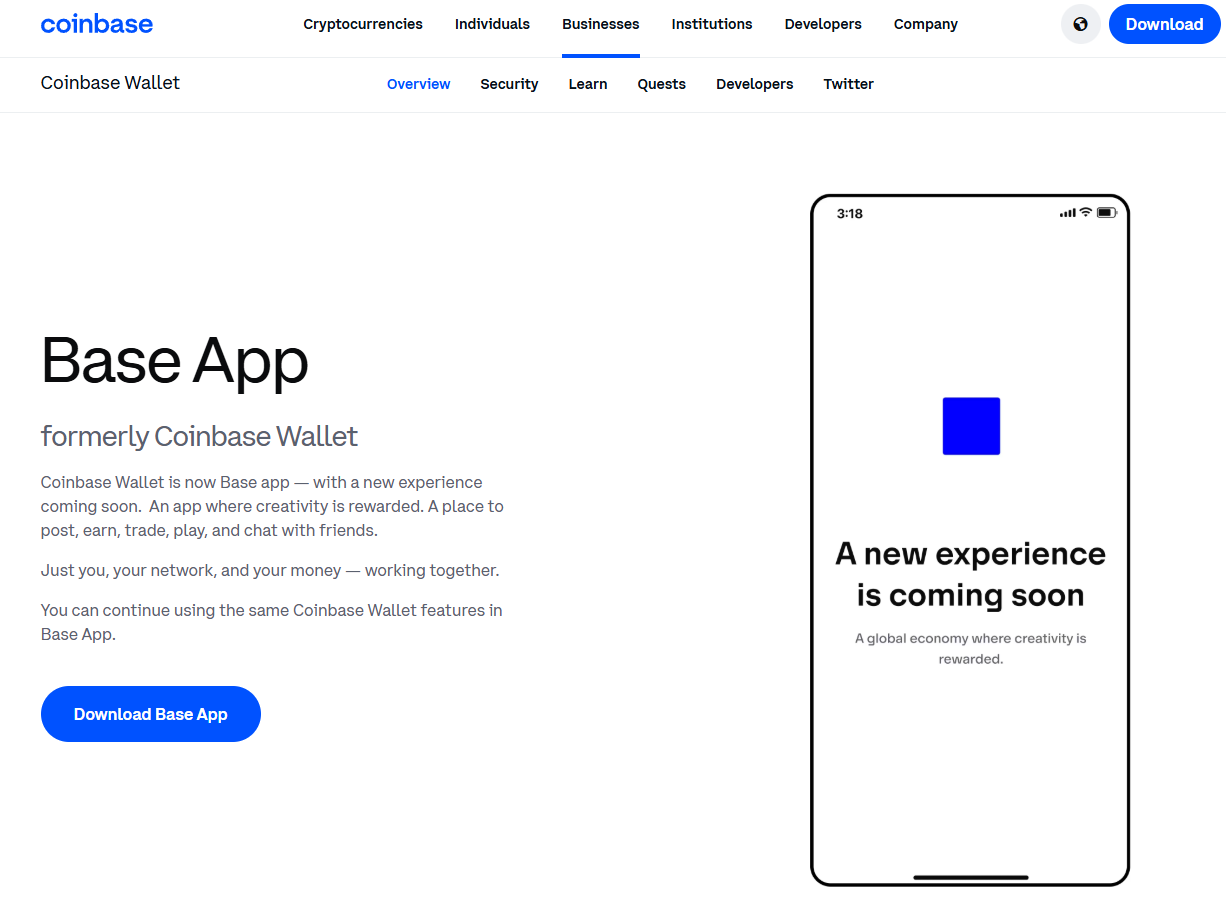
Why Use It: Rebranded as the Base app, the former Coinbase Wallet keeps familiar self-custody features while embracing Base/L2 culture and onchain social/activity. If you already use Coinbase products, onboarding is straightforward while staying self-custodial. Coinbase
Best For: Coinbase users going self-custody; Base/L2 explorers; web3 social/NFT dabblers.
Notable Features: Self-custody; trading, posting, playing; continuity for Coinbase Wallet users. Coinbase
Consider If: You prefer chain-agnostic advanced tooling—others may offer deeper multichain utilities today.
Alternatives: MetaMask, Rainbow.
Regions: Global.
Fees Notes: Network fees; third-party swap/partner fees where used. Coinbase
Why Use It: Phantom started Solana-first and has grown into a polished multichain wallet (Solana, Ethereum, and more). The interface is clean, with strong NFT views and transaction clarity—great for newcomers to Solana and cross-chain dabblers. Phantom+1
Best For: Solana users, NFT traders, multichain retail.
Notable Features: In-wallet swaps and bridging; gasless swaps on Solana (select cases); robust notifications/history. Phantom Support+1
Consider If: You want the lowest possible swap fees—Phantom lists 0.85% on select pairs, with separate gas/bridge fees. Phantom Support
Alternatives: OKX Wallet, Trust Wallet.
Regions: Global.
Fees Notes: Network fees; Phantom fee 0.85% on select swaps; gasless-swap fee rules apply on Solana. Phantom Support+1
Why Use It: OKX Wallet (extension + mobile) plugs you into OKX’s DEX aggregator, NFT marketplace, and DeFi. It offers multiple swap modes and solid routing—useful when chasing best execution across chains. OKX Wallet+1
Best For: DeFi users seeking liquidity routing; cross-chain swappers; NFT traders.
Notable Features: Multi-mode swaps; DEX aggregator; marketplace; Earn/Discover sections. OKX Wallet
Consider If: You need crystal-clear fee schedules—OKX lists DEX interface fee tiers up to 0.85% depending on pair groups. OKX Wallet
Alternatives: MetaMask, Bitget Wallet.
Regions: Global (wallet).
Fees Notes: Network fees; OKX DEX interface fee 0–0.85% by pair category. OKX Wallet
Why Use It: Exodus is a long-standing, self-custodial wallet with a beautifully designed UI across desktop and mobile. Portfolio tracking and NFT galleries are polished, and its Web3 Wallet extends multichain support. Exodus
Best For: Newcomers who want clarity; portfolio-first users; multi-device use.
Notable Features: Multichain Web3 Wallet; thousands of swap pairs; simple buy/sell integrations. Exodus
Consider If: You want explicit fee details—Exodus doesn’t charge send/receive wallet fees, but network and partner fees still apply. Exodus Knowledge Base
Alternatives: Crypto.com Onchain, ZenGo.
Regions: Global.
Fees Notes: No Exodus send/receive fees; network fees + third-party swap/fiat fees may apply. Exodus Knowledge Base
Why Use It: Formerly known as the DeFi Wallet experience, Crypto.com Onchain is a self-custodial app with multichain support, in-wallet trading, and dapp access. It’s friendly for users who like Crypto.com’s ecosystem but want self-custody keys. Crypto.com
Best For: Mobile-first users; staking/earn explorers; Crypto.com ecosystem fans.
Notable Features: Local key encryption; import via 12/18/24-word phrases; multichain trading & dapp browser. Crypto.com
Consider If: You prefer a purely chain-agnostic wallet without exchange brand ties—others may feel “lighter.”
Alternatives: Trust Wallet, Exodus.
Regions: Global (feature availability can vary).
Fees Notes: Network/partner fees; self-custody (no custodial withdrawal fees). Crypto.com
Why Use It: ZenGo uses MPC to remove single-point seed phrase risks while keeping you in self-custody. That makes setup and recovery less nerve-wracking for new users, without buying hardware. Zengo+1
Best For: Beginners prioritizing recovery; mobile-only users; security-conscious travelers.
Notable Features: Seed-phrase-free MPC; in-app buy/swap; staking for select assets. Zengo+1
Consider If: You want classic seed control or advanced on-chain tooling—some power features are simpler by design.
Alternatives: Ledger Live (with hardware), Trust Wallet.
Regions: Global.
Fees Notes: Network fees; partner fees for buy/swap as quoted in-app. Zengo
Why Use It: Formerly BitKeep, Bitget Wallet has grown into a large multichain wallet with DEX aggregation, dapp discovery, and memecoin-friendly flows. It’s geared for on-chain traders who want routing and token coverage across 65+ chains. Bitget Wallet+1
Best For: Power users in DeFi; memecoin and airdrop participants; cross-chain swaps.
Notable Features: Multichain DEX aggregator; dapp hub; iOS/Android + Chrome extension. Bitget Wallet
Consider If: You prefer a simpler, beginner-first interface—others above are more hand-holding.
Alternatives: OKX Wallet, MetaMask.
Regions: Global.
Fees Notes: Network fees; interface/partner fees vary by route/pair. Bitget Wallet
Why Use It: Ledger Live is the companion app to Ledger hardware wallets; it brings buy, swap, stake, and portfolio monitoring into a single interface while private keys stay in the hardware device. Great for retail users who want a mobile/desktop app but insist on offline signing. Ledger
Best For: Long-term holders; high-value accounts; users planning to add hardware.
Notable Features: Buy/sell/swap/stake modules; multi-asset support; iOS/Android + desktop. Google Play+1
Consider If: You don’t own hardware—full security benefits require a Ledger device.
Alternatives: ZenGo (MPC), Trezor Suite (with hardware).
Regions: Global.
Fees Notes: Network fees; partner fees for buy/swap as quoted in-app. Ledger


Primary CTA: Start free trial

This article is for research/education, not financial advice.
What is a retail crypto wallet (mobile/web)?
A mobile/web retail wallet is software that stores your private keys and lets you sign transactions from your phone or browser. Most are self-custodial, meaning you—not an exchange—control your keys.
Is a self-custody wallet safer than keeping coins on an exchange?
Self-custody removes exchange counterparty risk. However, you must protect recovery methods (seed phrase, MPC recovery) and your device. Hardware or MPC-based options can add protection.
Which wallet is best for beginners?
For simplicity: Trust Wallet, Exodus, or ZenGo. They have straightforward onboarding, clear portfolio views, and solid docs. Advanced users might prefer MetaMask, Phantom, or OKX Wallet for deeper on-chain tooling. OKX Wallet+5Trust Wallet+5Exodus+5
What fees should I expect?
You’ll always pay network gas. Some wallets add interface/service fees on swaps/bridges (e.g., MetaMask 0.875%; Phantom 0.85% on select pairs; OKX DEX 0–0.85% depending on token groups). MetaMask Help Center+2Phantom Support+2
Do I need hardware for mobile/web wallets?
No. Many work fine without hardware. For higher balances, pairing a mobile/web app with a hardware wallet (e.g., via Ledger Live) can reduce signing risk. Ledger
Can I use one wallet across multiple chains?
Yes—most featured wallets are multichain. Check chain lists and NFT support before migrating. OKX Wallet+2Bitget Wallet+2
If you want maximum dapp coverage, go MetaMask; Solana-centric with great UX, pick Phantom; for exchange-adjacent simplicity, choose Base app or Crypto.com Onchain; for hardware-backed security, Ledger Live. Power users chasing routing and airdrops may prefer OKX Wallet or Bitget Wallet, while newcomers should consider Trust Wallet, Exodus, or ZenGo.
Related Reads:
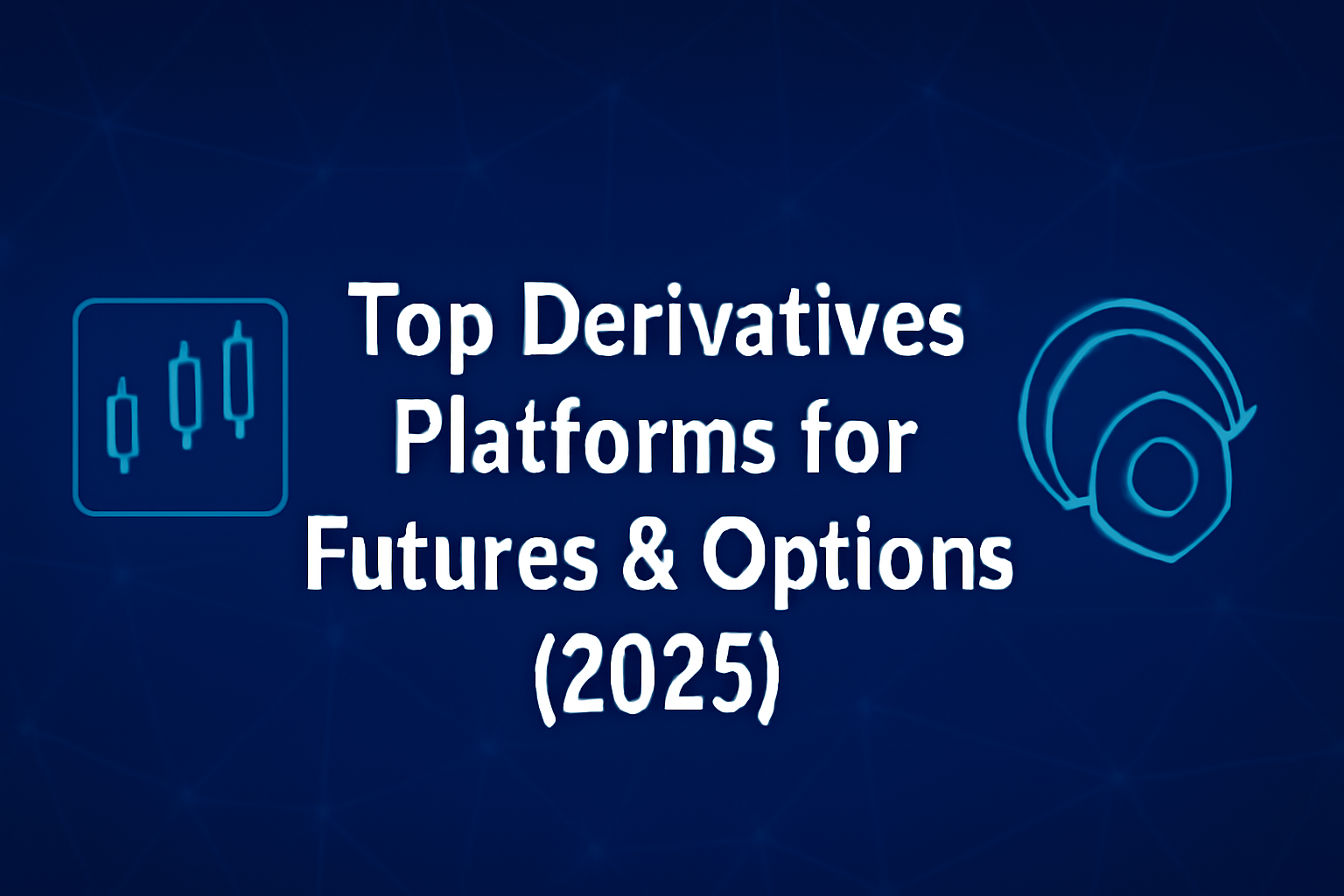
%201.svg)
%201.svg)
If you trade crypto futures and options, picking the right derivatives platforms can make or break your results. In this guide, we sort the top exchanges and on-chain venues by liquidity, security, costs, and product depth so you can match your strategy to the right venue—fast. You’ll find quick answers near the top, deeper context below, and links to official resources. We cover crypto futures, crypto options, and perpetual swaps for both centralized and decentralized platforms.
Quick answer: The best platform for you depends on region/eligibility, contract types (perps, dated futures, options), fee structure, margin system, and support quality. Below we score each provider and map them to common use cases.
We scored each provider using the weights below (0–100 total):
Sources: Official platform pages, help centers, and product docs; public disclosures and product catalogs; our hands-on review and long-term coverage of derivatives venues. Last updated September 2025.
Each summary includes why it stands out, who it’s best for, and what to consider. Always check regional eligibility.

Why Use It: Binance Futures offers some of the deepest books and widest perp listings, with robust APIs and portfolio margin. It’s a go-to for active traders who need speed and breadth.
Best For: High-frequency/active traders; systematic/API users; altcoin perp explorers.
Notable Features: Perpetuals and dated futures, options module, copy trading, portfolio margin.
Consider If: You need U.S.-regulated access—availability may vary by region.
Alternatives: OKX, Bybit.
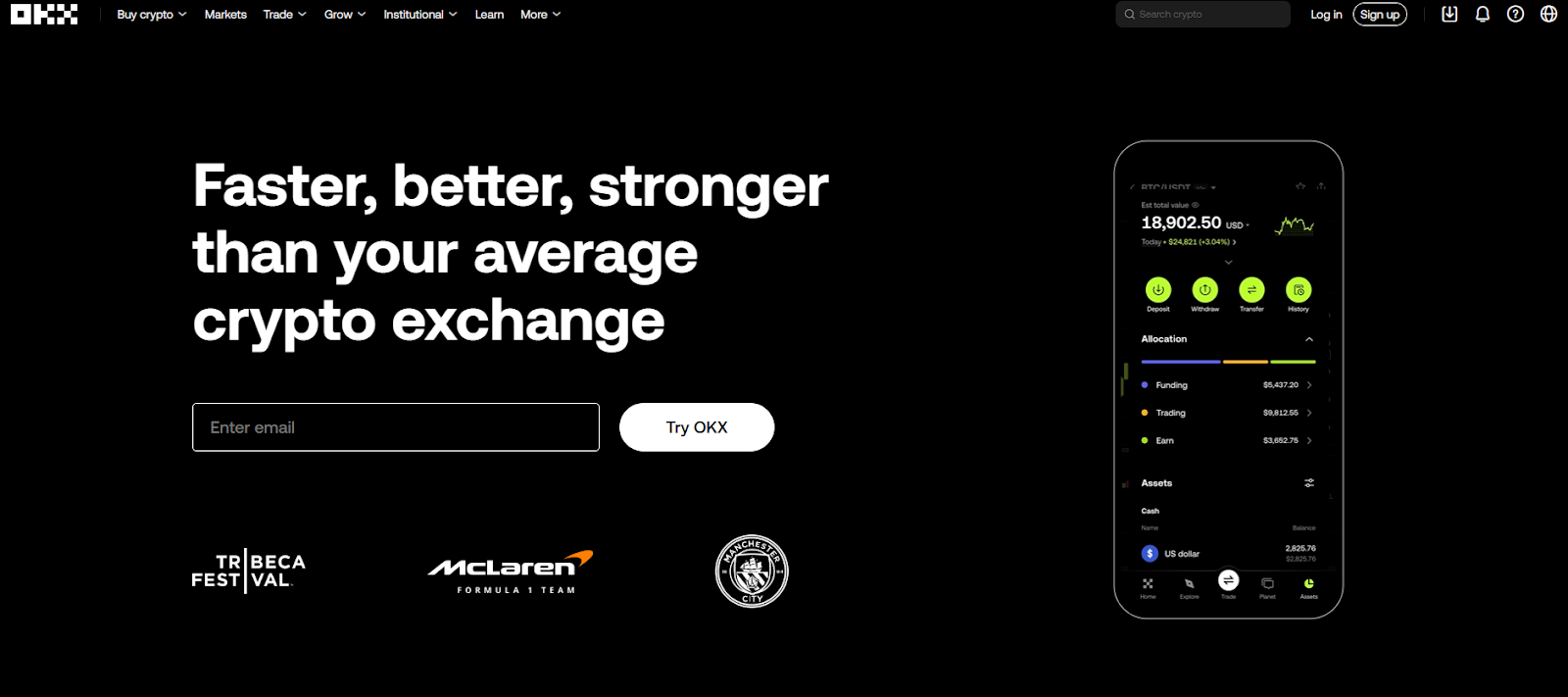
Why Use It: Strong product coverage (perps, dated futures, options) with solid liquidity and a polished interface. Good balance of features for discretionary and API traders.
Best For: Multi-instrument traders; users wanting options + perps under one roof.
Notable Features: Unified account, options chain, pre-market perps, apps and API.
Consider If: Region/eligibility and KYC rules may limit access.
Alternatives: Binance Futures, Bybit.
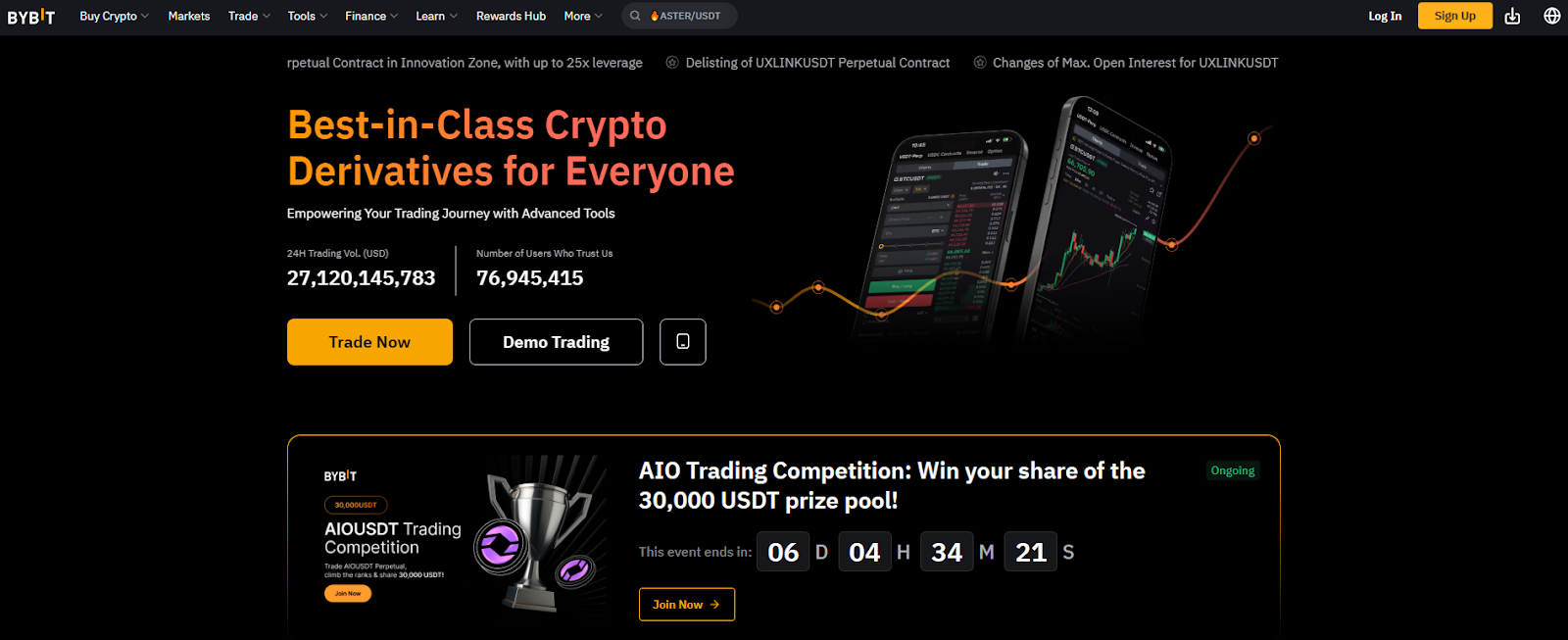
Why Use It: Competitive fees, broad perp markets, solid tooling, and a large user base make Bybit attractive for day traders and swing traders alike.
Best For: Perps power users; copy-trading and mobile-first traders.
Notable Features: USDT/USDC coin-margined perps, options, demo trading, OpenAPI.
Consider If: Check your local rules—service availability varies by region.
Alternatives: Binance Futures, Bitget.
Why Use It: Deribit is the reference venue for crypto options on BTC and ETH, with deep liquidity across maturities and strikes; it also offers futures.
Best For: Options traders (directional, spreads, volatility) and institutions.
Notable Features: Options analytics, block trading tools, test environment, 24/7 support.
Consider If: Regional access may be limited; primarily majors vs. broad alt coverage.
Alternatives: Aevo (on-chain), CME (regulated futures/options).
Why Use It: For institutions needing CFTC-regulated access, margin efficiency, and robust market infrastructure, CME is the standard for BTC/ETH futures and options.
Best For: Funds, corporates, and professionals with FCM relationships.
Notable Features: Standard and micro contracts, options, benchmarks, data tools.
Consider If: Requires brokerage/FCM onboarding; no altcoin perps.
Alternatives: Coinbase Derivatives (U.S.), Kraken Futures (institutions).
Why Use It: dYdX v4 runs on its own chain with on-chain settlement and pro tooling. Traders who want non-custodial perps and transparent mechanics gravitate here.
Best For: DeFi-native traders; users prioritizing self-custody and transparency.
Notable Features: On-chain orderbook, staking & trading rewards, API, incentives.
Consider If: Wallet/key management and gas/network dynamics add complexity.
Alternatives: Aevo (options + perps), GMX (alt DEX perps).
Why Use It: Kraken offers crypto futures for eligible regions, with a growing U.S. footprint via Kraken Derivatives US and established institutional services.
Best For: Traders who value brand trust, support, and clear documentation.
Notable Features: Pro interface, institutional onboarding, status and support resources.
Consider If: Product scope and leverage limits can differ by jurisdiction.
Alternatives: Coinbase Derivatives, CME.
Why Use It: NFA-supervised futures for eligible U.S. customers and resources that explain contract types. Outside the U.S., Coinbase also offers derivatives via separate entities.
Best For: U.S. traders needing regulated access; Coinbase ecosystem users.
Notable Features: Nano BTC/ETH contracts, 24/7 trading, learn content, FCM/FCM-like flows.
Consider If: Contract lineup is narrower than global offshore venues.
Alternatives: CME (institutional), Kraken Futures.
Why Use It: Bitget emphasizes a wide perp catalog, social/copy features, and frequent product updates—useful for traders rotating across narratives.
Best For: Altcoin perp explorers; copy-trading users; mobile-first traders.
Notable Features: USDT/USDC-margined perps, copy trading, frequent listings, guides.
Consider If: Check eligibility and risk—breadth can mean uneven depth in tail assets.
Alternatives: Bybit, OKX.
Why Use It: Aevo runs a custom L2 (OP-stack based) and offers options, perps, and pre-launch futures with unified margin—bridging CEX-like speed with on-chain settlement.
Best For: Options/perps traders who want DeFi custody with pro tools.
Notable Features: Unified margin, off-chain matching + on-chain settlement, pre-launch markets, detailed docs and fee specs.
Consider If: On-chain workflows (bridging, gas) and product scope differ from CEXs.
Alternatives: Deribit (options liquidity), dYdX (perps DEX).


Workflow (1–4): Research with Token Metrics → Pick venue(s) above → Execute perps/options → Monitor with alerts and refine.
Primary CTA: Start free trial

This article is for research/education, not financial advice.
What’s the difference between perps and traditional futures?
Perpetual swaps have no expiry, so you don’t roll contracts; instead, a funding rate nudges perp prices toward spot. Dated futures expire and may require roll management. Binance+1
Where can U.S. traders access regulated crypto futures?
Through CFTC/NFA-supervised venues like CME (via FCMs) and Coinbase Derivatives for eligible customers; availability and contract lists vary by account type. CME Group+2Coinbase+2
What’s the leading venue for BTC/ETH options liquidity?
Deribit has long been the primary market for BTC/ETH options liquidity used by pros and market makers. deribit.com
Which DEXs offer serious perps trading?
dYdX is purpose-built for on-chain perps with a pro workflow; Aevo blends options + perps with unified margin on a custom L2. dYdX Chain+1
How do I keep fees under control?
Use maker orders where possible, seek fee tier discounts/rebates, and compare funding rates over your expected holding time. Each venue publishes fee schedules and specs.
If you want deep global perps, start with Binance, OKX, or Bybit. For BTC/ETH options, Deribit remains the benchmark. If you need U.S.-regulated access, look at CME via an FCM or Coinbase Derivatives; Kraken is expanding its futures footprint. Prefer self-custody? dYdX and Aevo are solid on-chain choices. Match the venue to your region, contracts, and risk process—then let Token Metrics surface signals and manage the watchlist.
Related Reads


 Create Your Free Account
Create Your Free Account9450 SW Gemini Dr
PMB 59348
Beaverton, Oregon 97008-7105 US
.svg)




.png)
Token Metrics Media LLC is a regular publication of information, analysis, and commentary focused especially on blockchain technology and business, cryptocurrency, blockchain-based tokens, market trends, and trading strategies.
Token Metrics Media LLC does not provide individually tailored investment advice and does not take a subscriber’s or anyone’s personal circumstances into consideration when discussing investments; nor is Token Metrics Advisers LLC registered as an investment adviser or broker-dealer in any jurisdiction.
Information contained herein is not an offer or solicitation to buy, hold, or sell any security. The Token Metrics team has advised and invested in many blockchain companies. A complete list of their advisory roles and current holdings can be viewed here: https://tokenmetrics.com/disclosures.html/
Token Metrics Media LLC relies on information from various sources believed to be reliable, including clients and third parties, but cannot guarantee the accuracy and completeness of that information. Additionally, Token Metrics Media LLC does not provide tax advice, and investors are encouraged to consult with their personal tax advisors.
All investing involves risk, including the possible loss of money you invest, and past performance does not guarantee future performance. Ratings and price predictions are provided for informational and illustrative purposes, and may not reflect actual future performance.


